Bagamoyo region, Coastal Tanzania north of Dar es Salaam - 2016 |
| |
|
|
After a tiresome safari, it is always good to relax some days by the sea before returning home. On this journey, I booked a lodge at a place called Bomani Beach Bungalows, about 60 km north of Dar es Salaam. This lodge is situated in Mlingotini Village on coastal mainland Tanzania south of Bagamoyo. There I got a rustic room with a terrace overlooking a lagoon for about one week in early December. A perfect spot looking for birds and observe the locals doing their fishing business.
With December and January easily being the warmest months in the region, I preferred to stay in the shadows enjoying the Indian Ocean breeze, close to the air-conditioned room. I kept my camera with the 200-500 mm lens nearby, and occasionally got some photos of birds overflying the lagoon or smaller birds visiting the garden in front of me. Many of the heavily cropped bird images shown here were taken from this terrace spot. During my stay, I booked a two-hour boat trip in nearby Saadani National Park. Saadani National Park was gazetted as recently as in 2005. Saadani National Park covers 1062 km2 and is located about 130 km north of Dar es Salaam. Not known to be rich of wildlife, and far from resembling the in-land parks in terms of animal diversity, the coastal vicinity presents a different ecosystem. The trip that cost me about $180 for a two-hour boat ride (yikes!), was well worth the dollars. It started fro the Porokanya-Wami River Boat Safari Pier. Anyway, the most memorable moment of the trip was when the amateurish boat driver managed to ground the boat on a sandbank. An American, maybe aged 65, offered to help by jumping into the crocodile-infested river, to help pushing the boat free. His final words were, "I have lived a good life" :) With the help of the clients, the boat was freed. We got to see some hippos, and I got photos of the Pied Kingfisher. At the boat ramp area, I managed to get a photo of the Palm-Nut Vulture, the highlight of the trip. I am not saying you should not visit this park, although the Americans joining my boat ride claimed to have only seen giraffes during their morning safari game drive. My advice is to skip this park for mammals but go there for the birds. Although we did not see a lot of bird species during the boat ride, Saadani National Park appears to be a good place for birding.
I also went for a half-day dhow trip in the lagoon to look for flamingos. No flamingos were seen, unfortunately, but the white Indian Ocean beaches were well worth the visit. I managed to see numerous species of waders and terns from a distance. And got to see the Crab Plover, a new species to me.
|
|
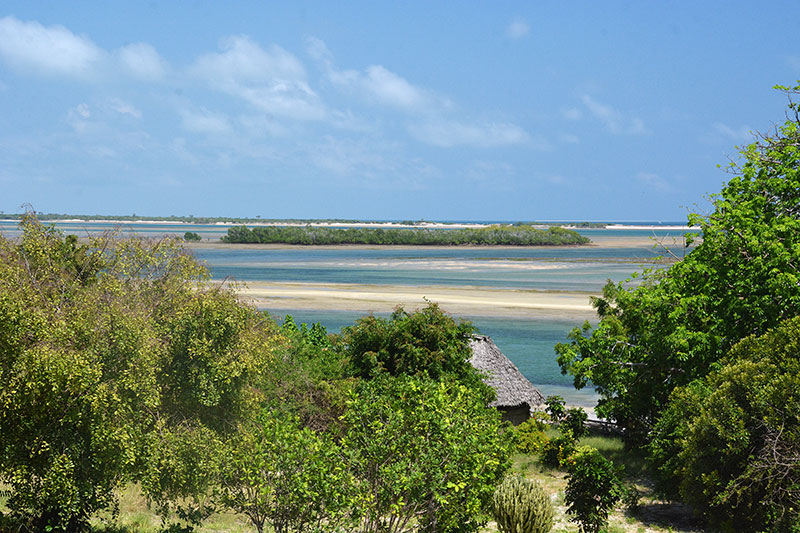
Lagoon seen from Bomani Beach Bungalows |
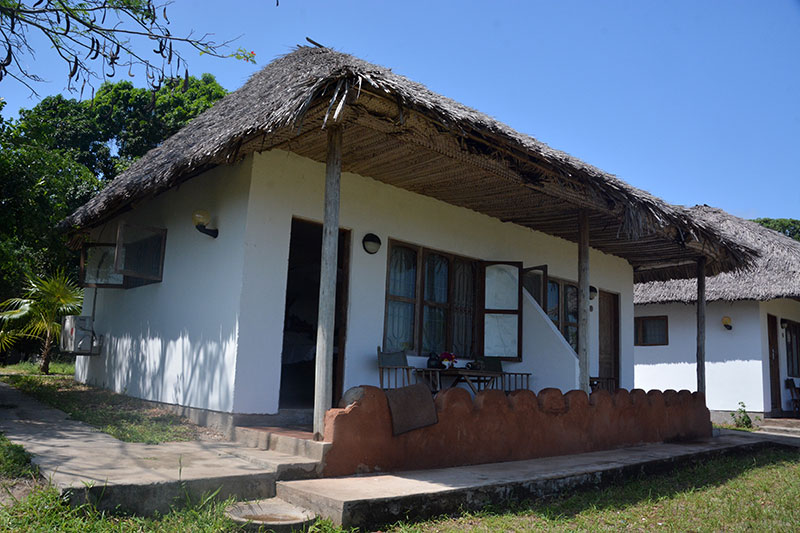
Cabin at the Bomani Beach Bungalows |
|
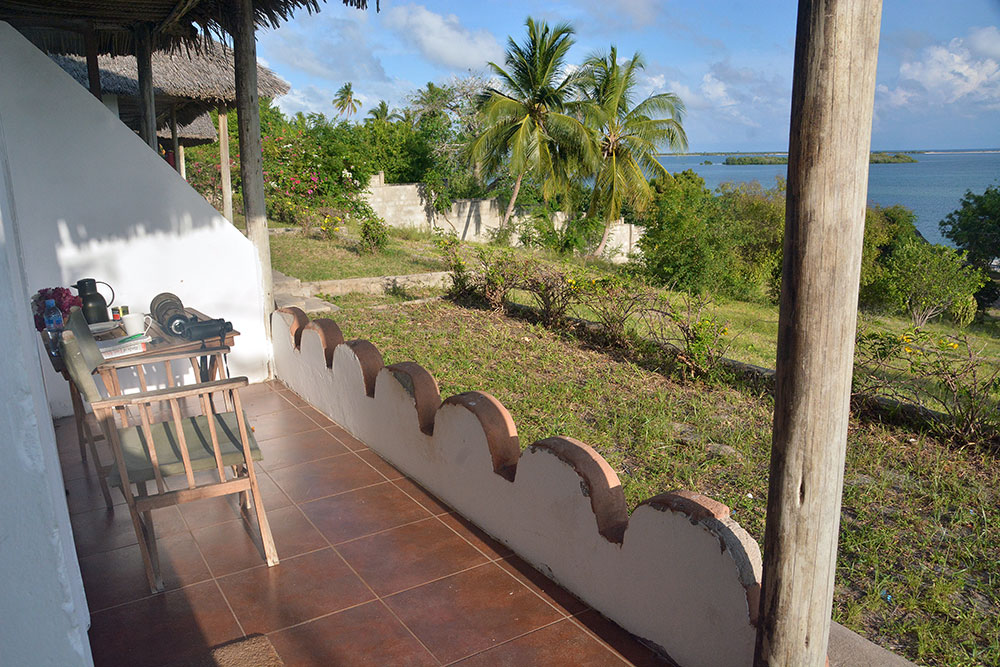
Birding terrace |
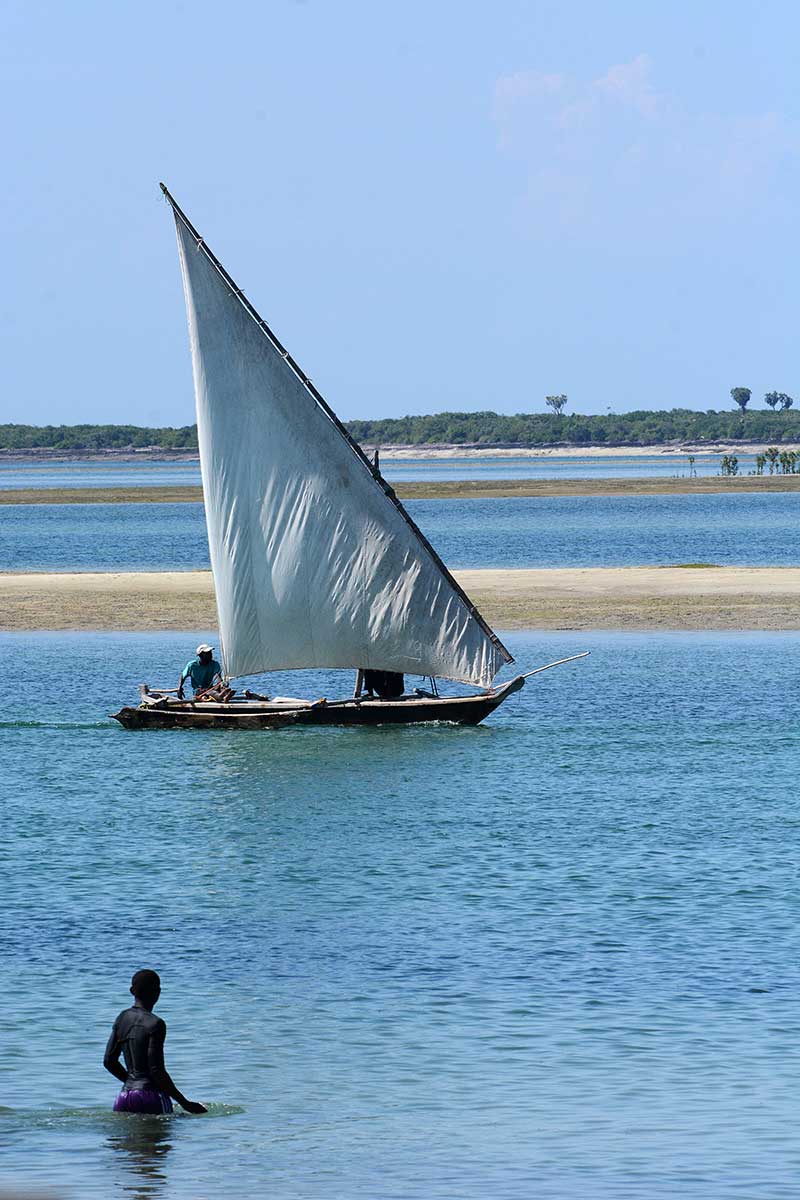
Dhow sailing |
|
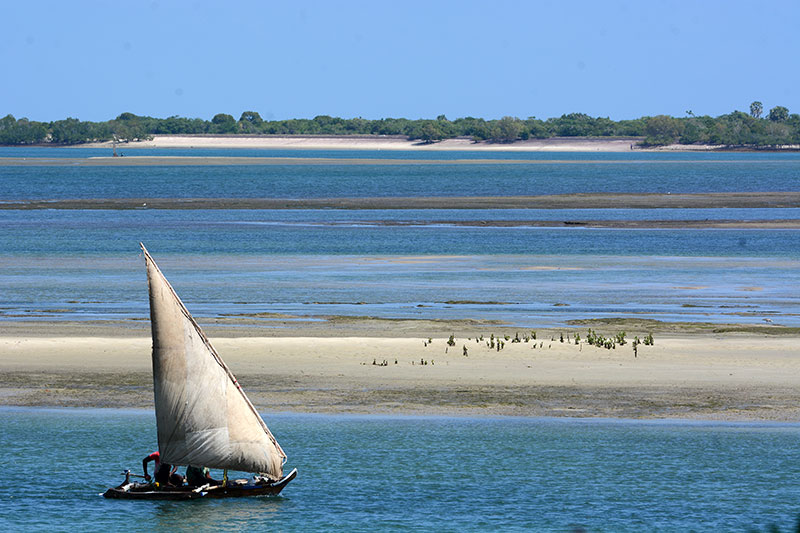
Lagoon view from the cabin terrace |
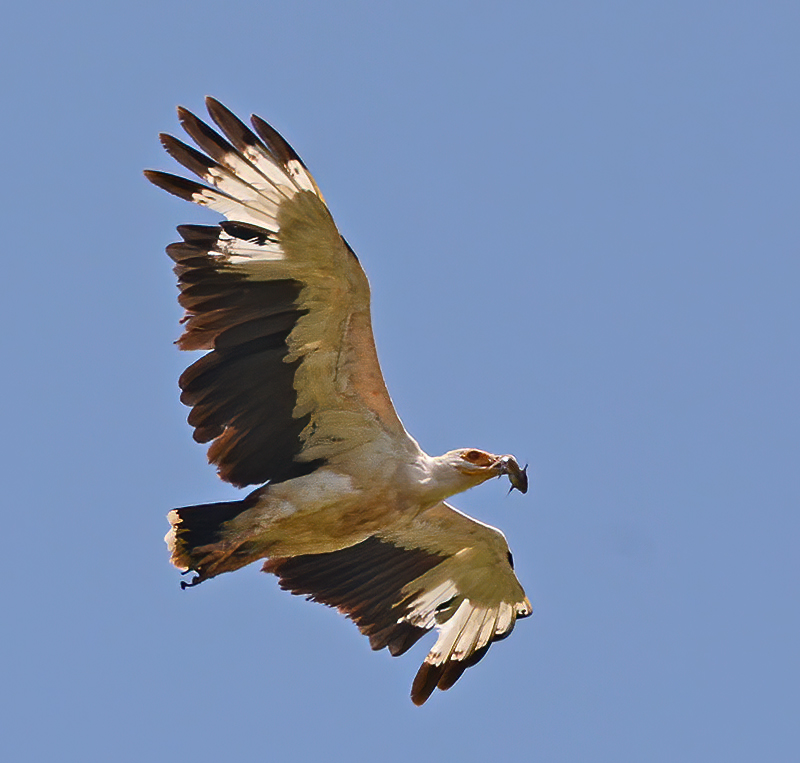
Palm-nut Vulture (Gypohierax angolensis), Wami River. The highlight of the trip to Saadani National Park. I also observed this species from my terrace at Bomani Beach Bungalows and on my dhow trip at the same location. Meaning this vulture must be rather common on this coastal stretch |
|
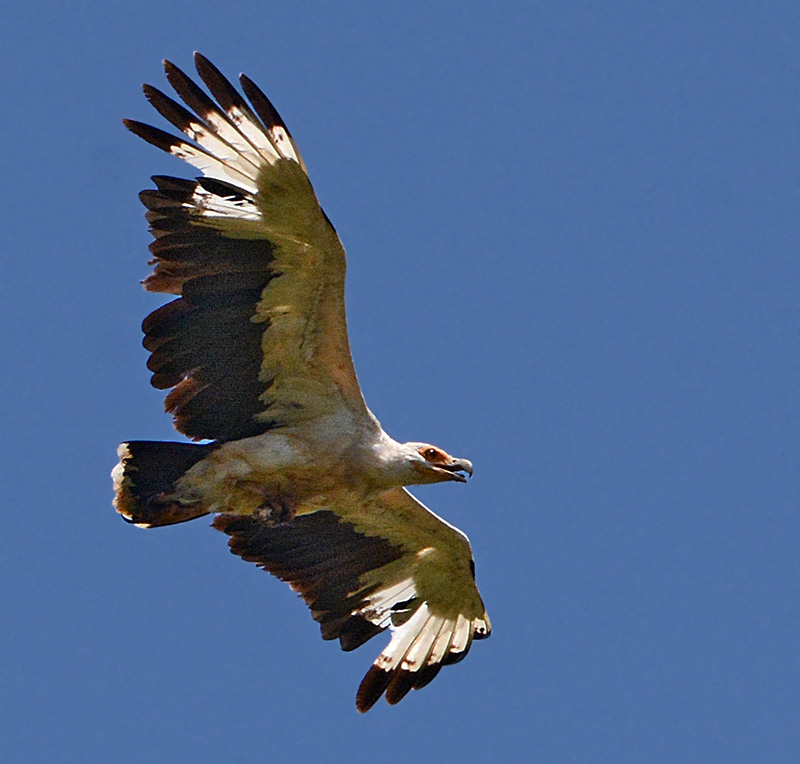
Palm-nut Vulture, appears to be the same individual as the opposite bird, coming back for more catfish
|
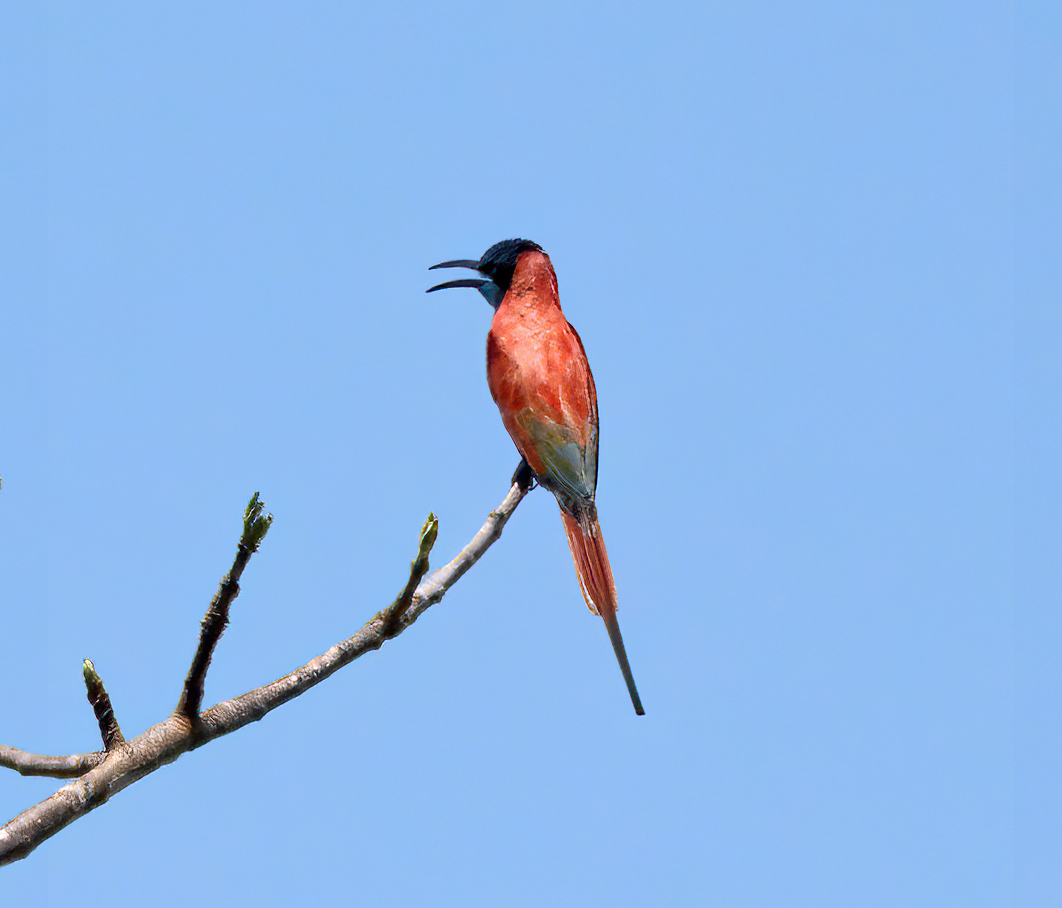
Northern Carmine Bee-eater (Merops nubicus), Bomani Beach Bungalows |
|
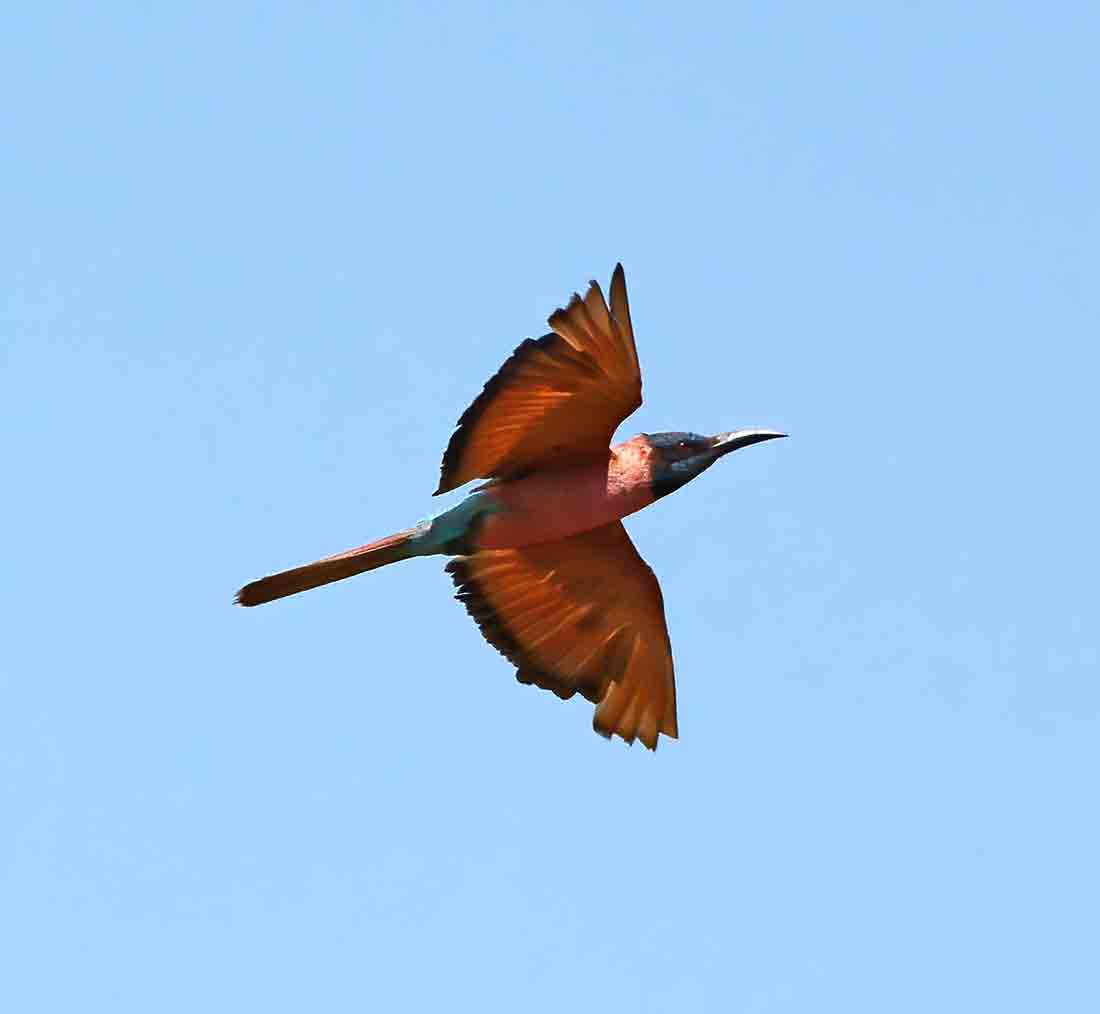
Northern Carmine Bee-eater, Bomani Beach Bungalows |
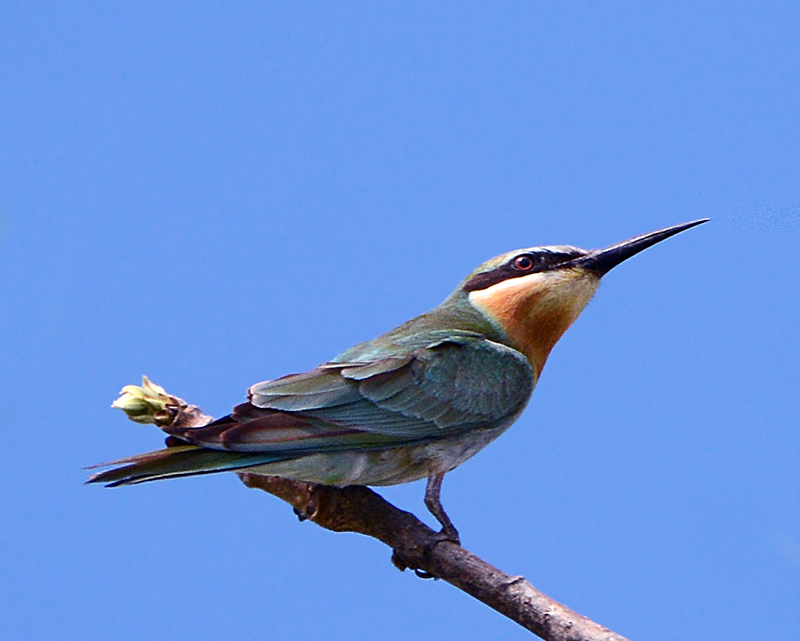
Blue-cheeked Bee-eater (Merops persicus), Bomani Beach Bungalows
|
|
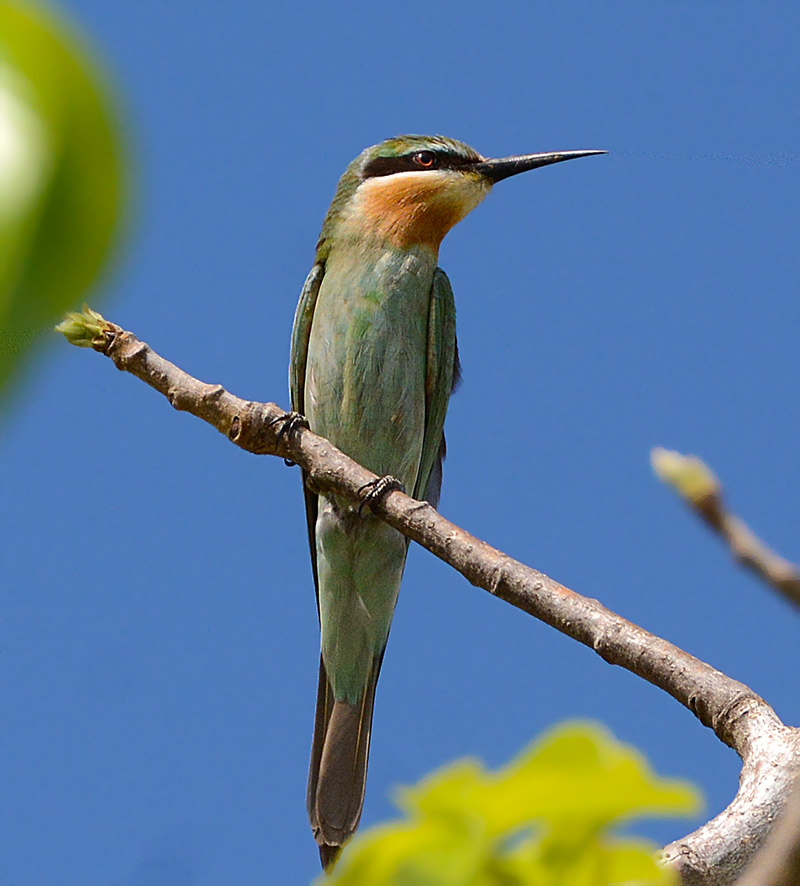
Blue-cheeked Bee-eater, Bomani Beach Bungalows
|
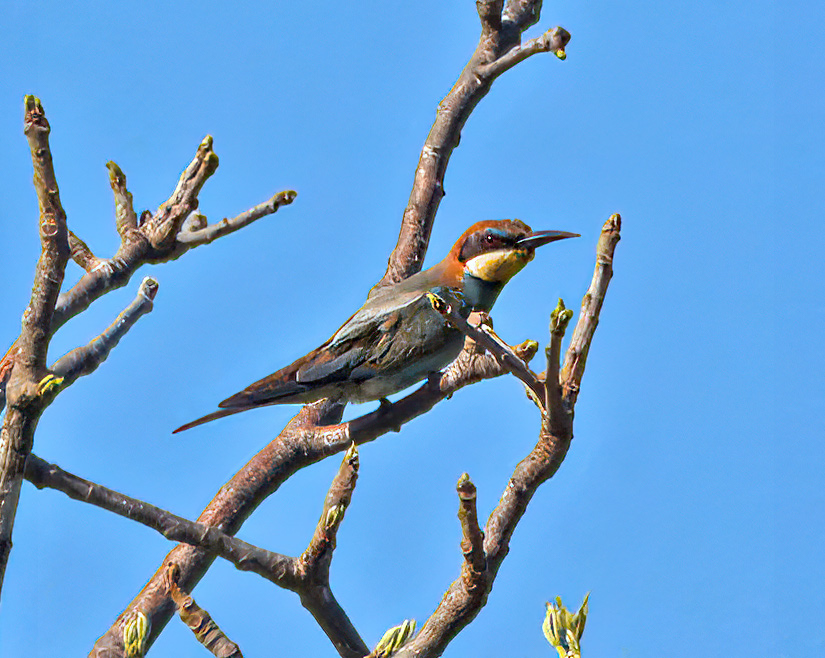
European Bee-eater (Merops apiaster), Bomani Beach Bungalows |
|

Brown-breasted Barbet (Lybius melanopterus), Bomani Beach Bungalows |
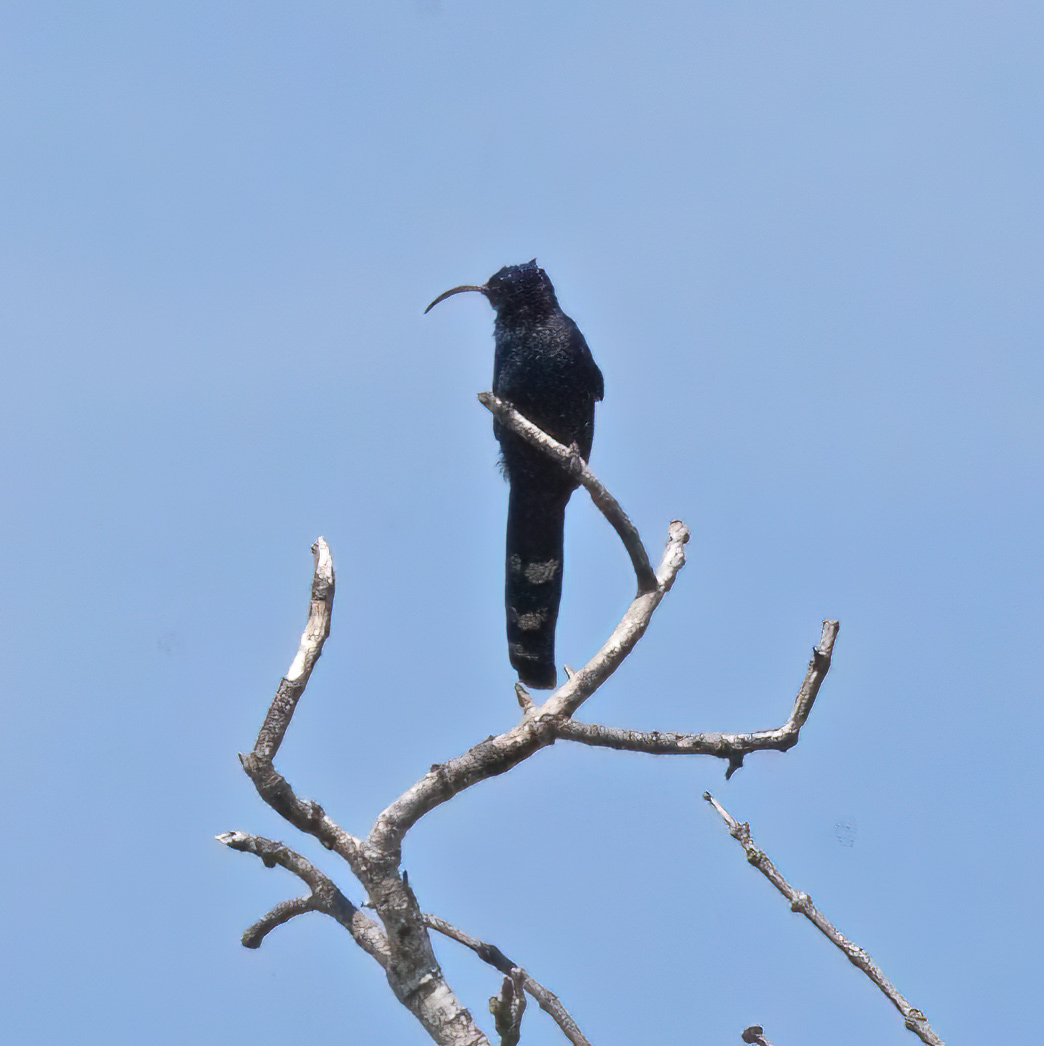
Common Scimitarbill (Rhinopomastus cyanomelas) |
|
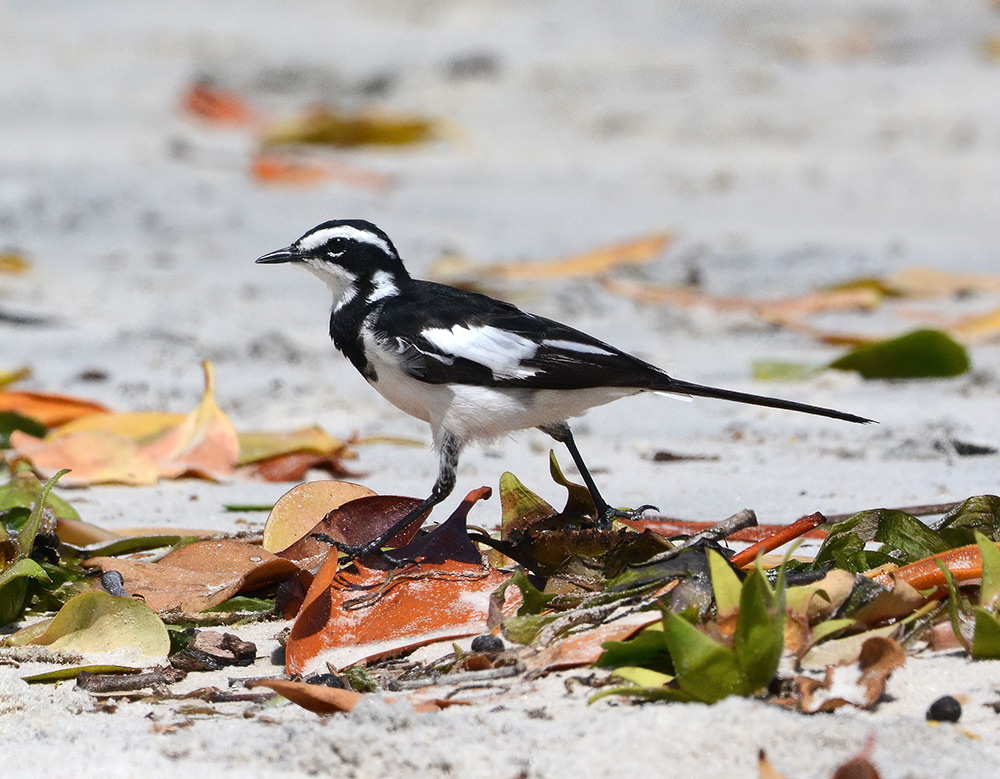
African Pied Wagtail (Motacilla aguimp), Bomani Beach Bungalows |
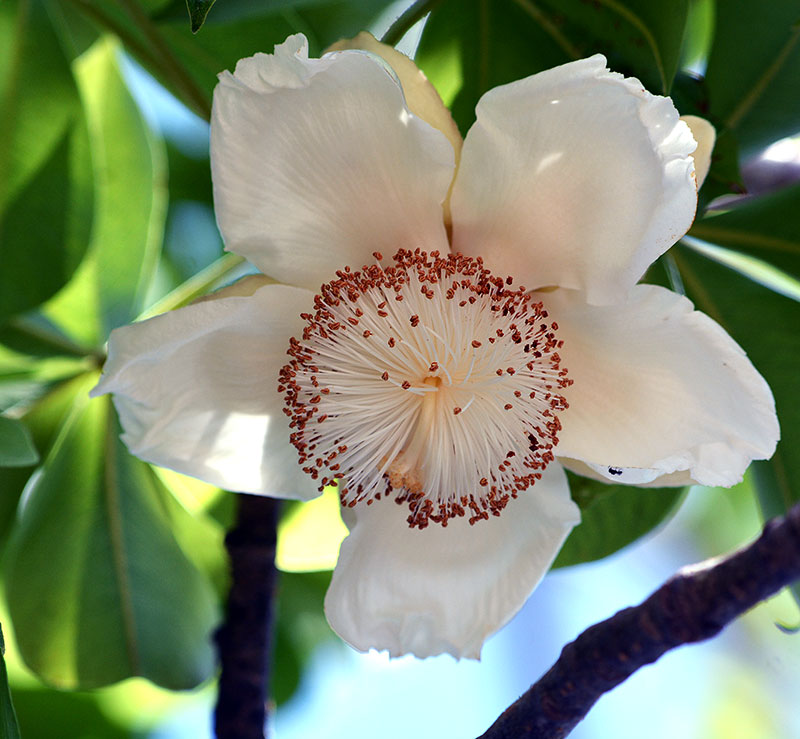
Flower of the Baobab Tree (Adansonia digitata)
|
|
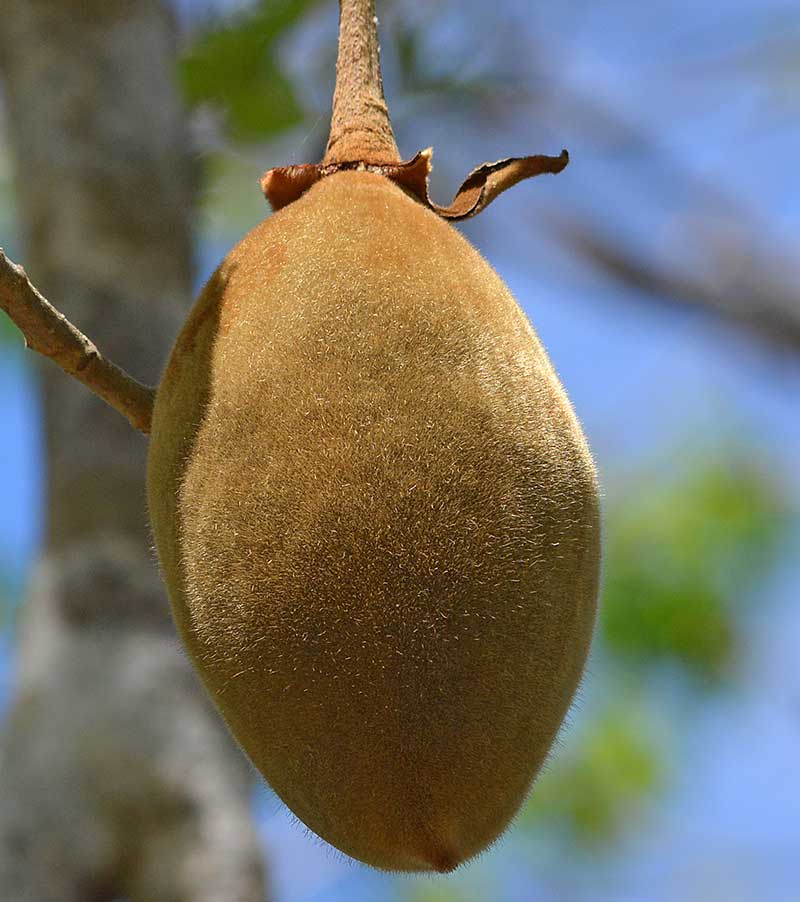
Baobab Tree fruit
|
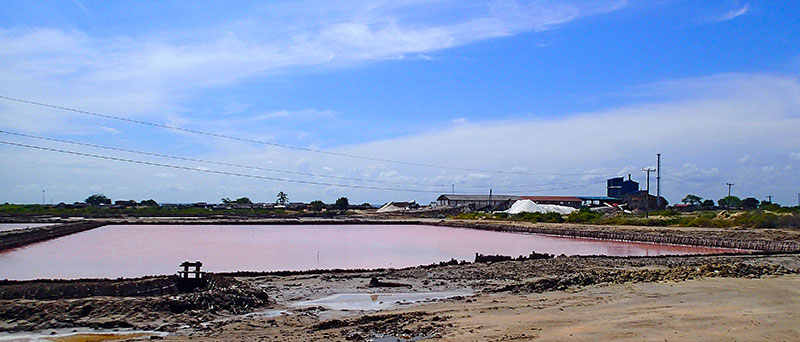
Salt production plant in Saadani National Park
|
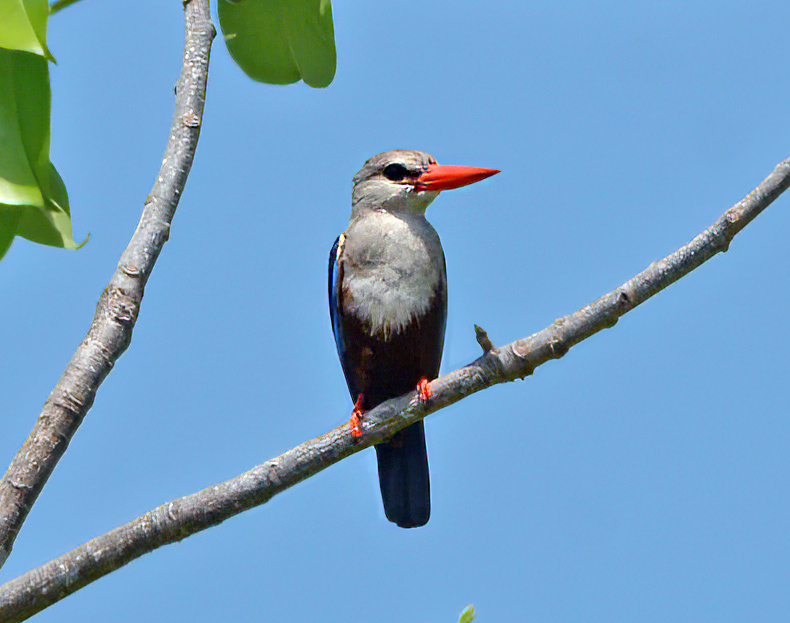
Grey-headed Kingfisher (Halcyon leucocephala), Bomani Beach Bungalows |
|
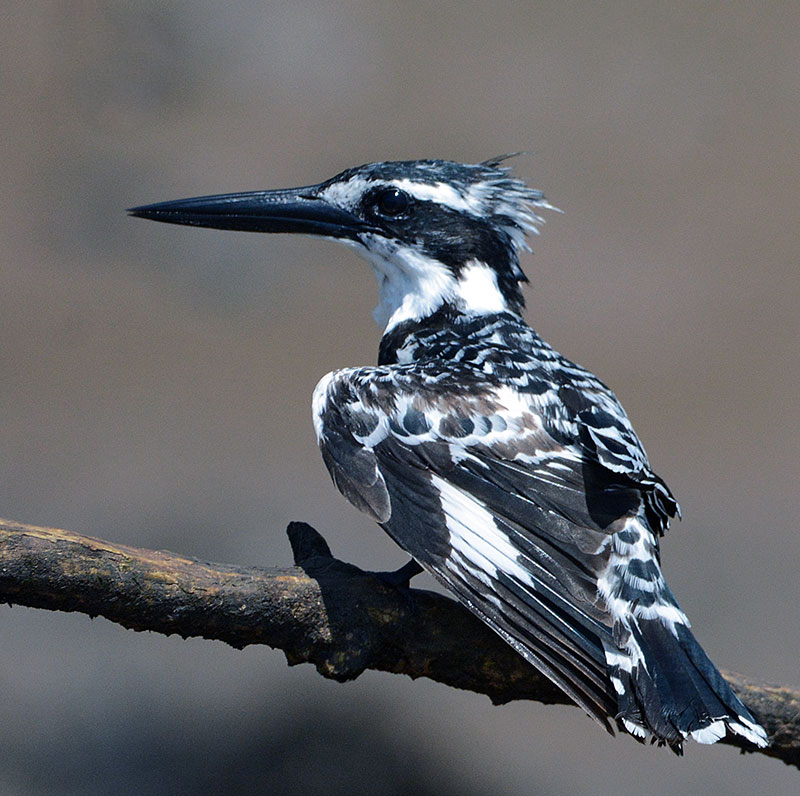
Pied Kingfisher (Ceryle rudis), Wami River, Saadani National Park |
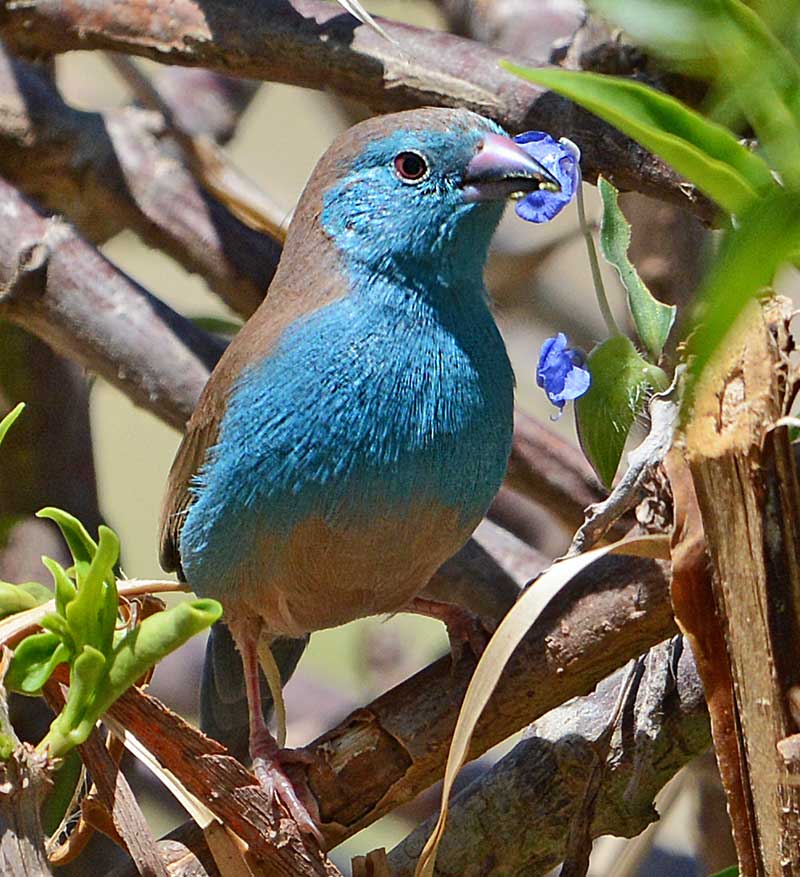
Southern Cordon-bleu (Uraeginthus angolensis), Bomani Beach Bungalows
|
|
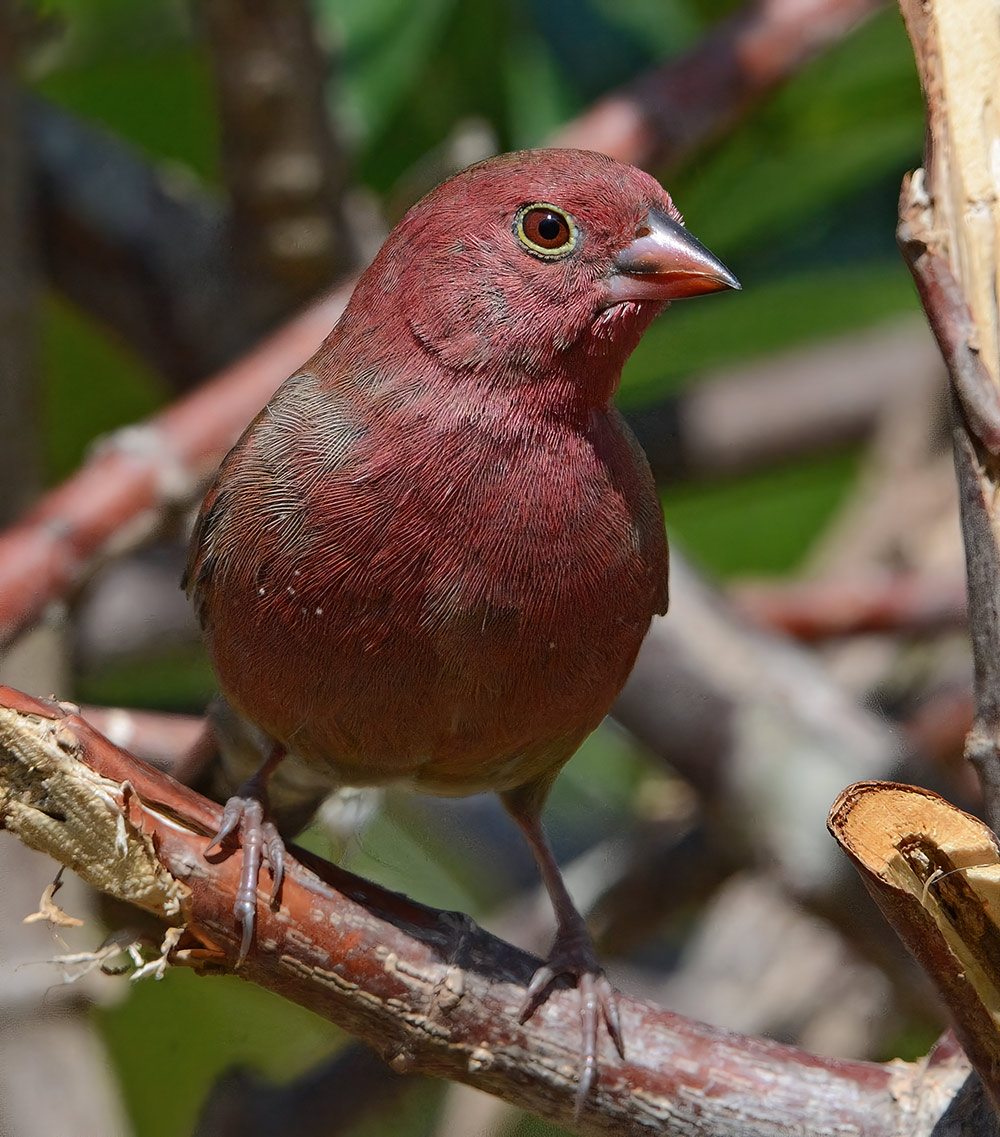
Red-billed Firefinch (Lagonosticta senegala), Bomani Beach Bungalows
|

Spotted Flycatcher - Gråfluesnapper (Muscicapa striata), Bomani Beach Bungalows
|
|
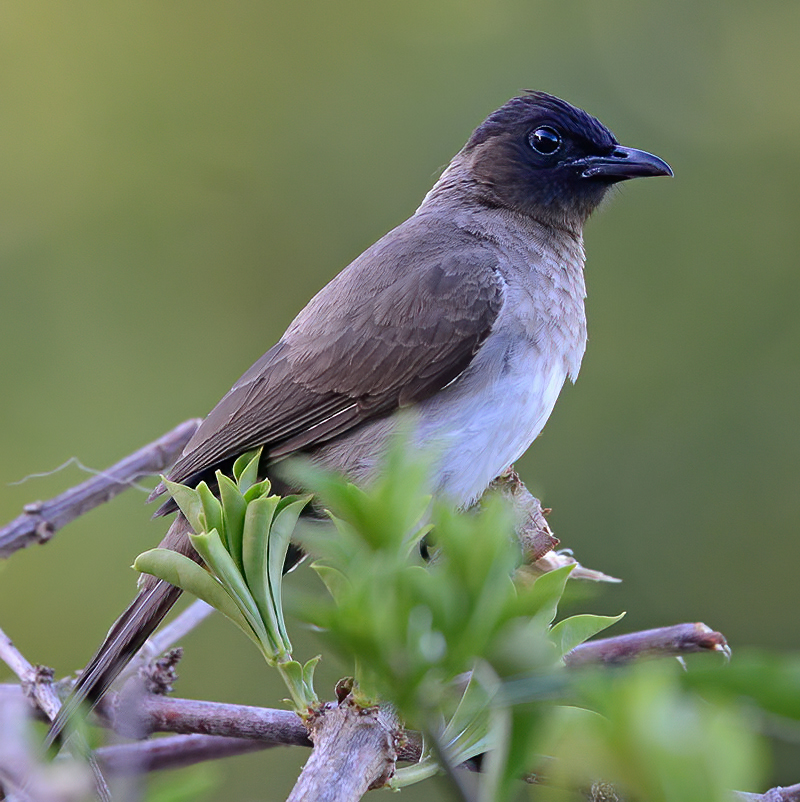
Dark-capped/Common Bulbul (Pycnonotus barbatus), Bomani Beach Bungalows
|
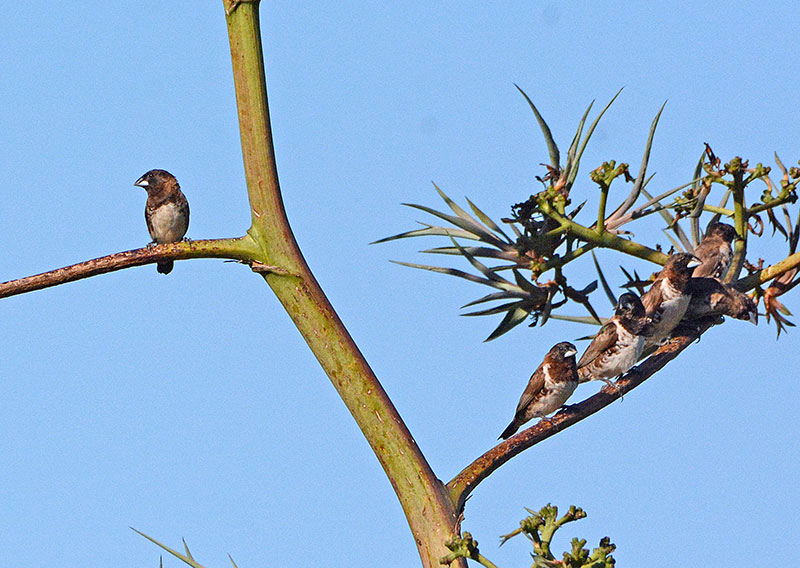
Bronze Mannikin (Lonchura cucullata), Bomani Beach Bungalows |
|

Indian Ocean seabirds, Bagamoyo |
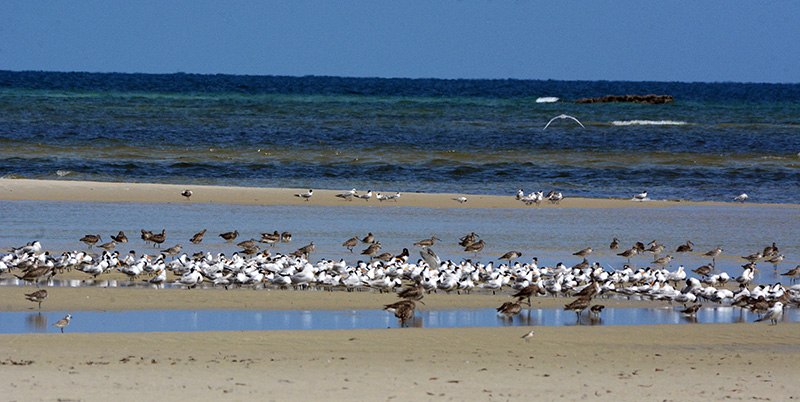
Indian Ocean seabirds, with lots of tern and wader species!
|
|
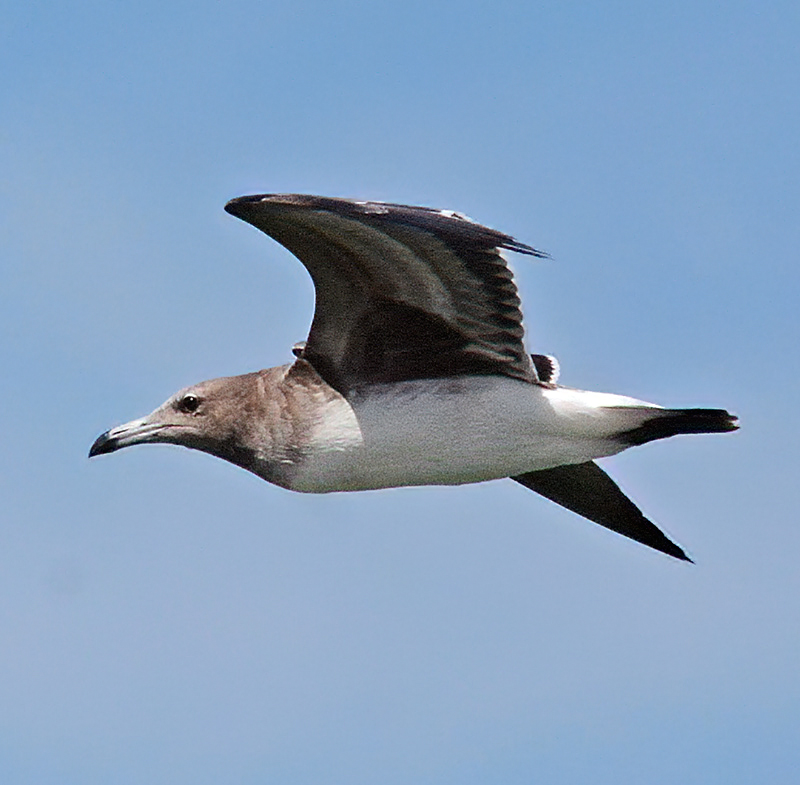
Sooty Gull (Ichthyaetus hemprichii), Bomani Beach Bungalows
|
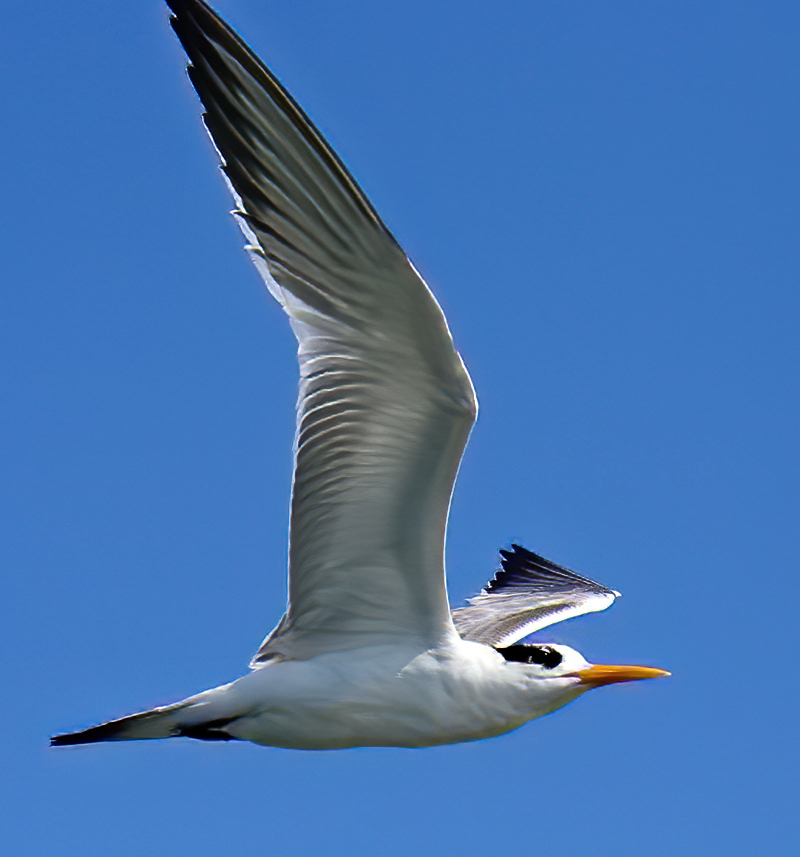
Lesser Crested Tern (Thalasseus bengalensis), Bomani Beach Bungalows |
|
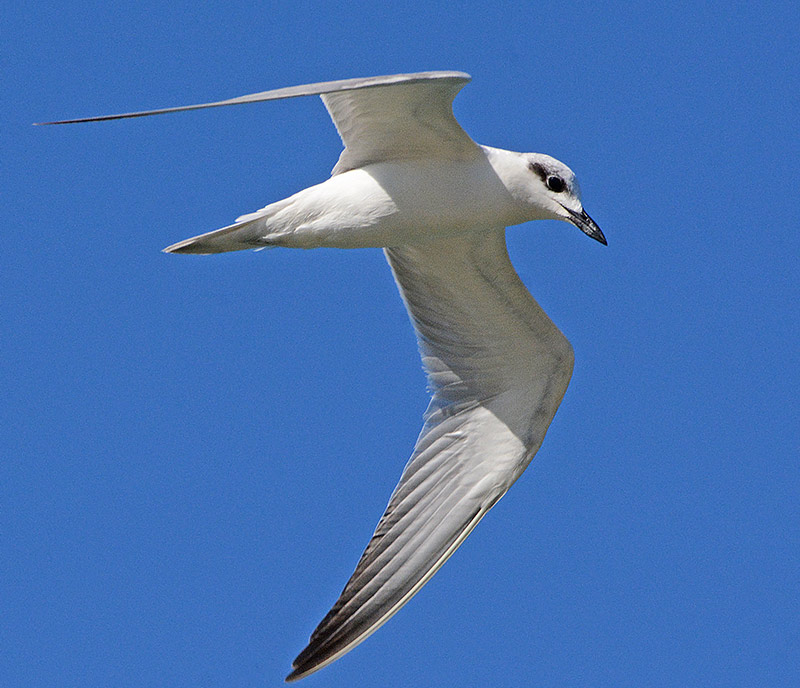
Gull-billed Tern (Gelochelidon nilotica), Bomani Beach Bungalows |
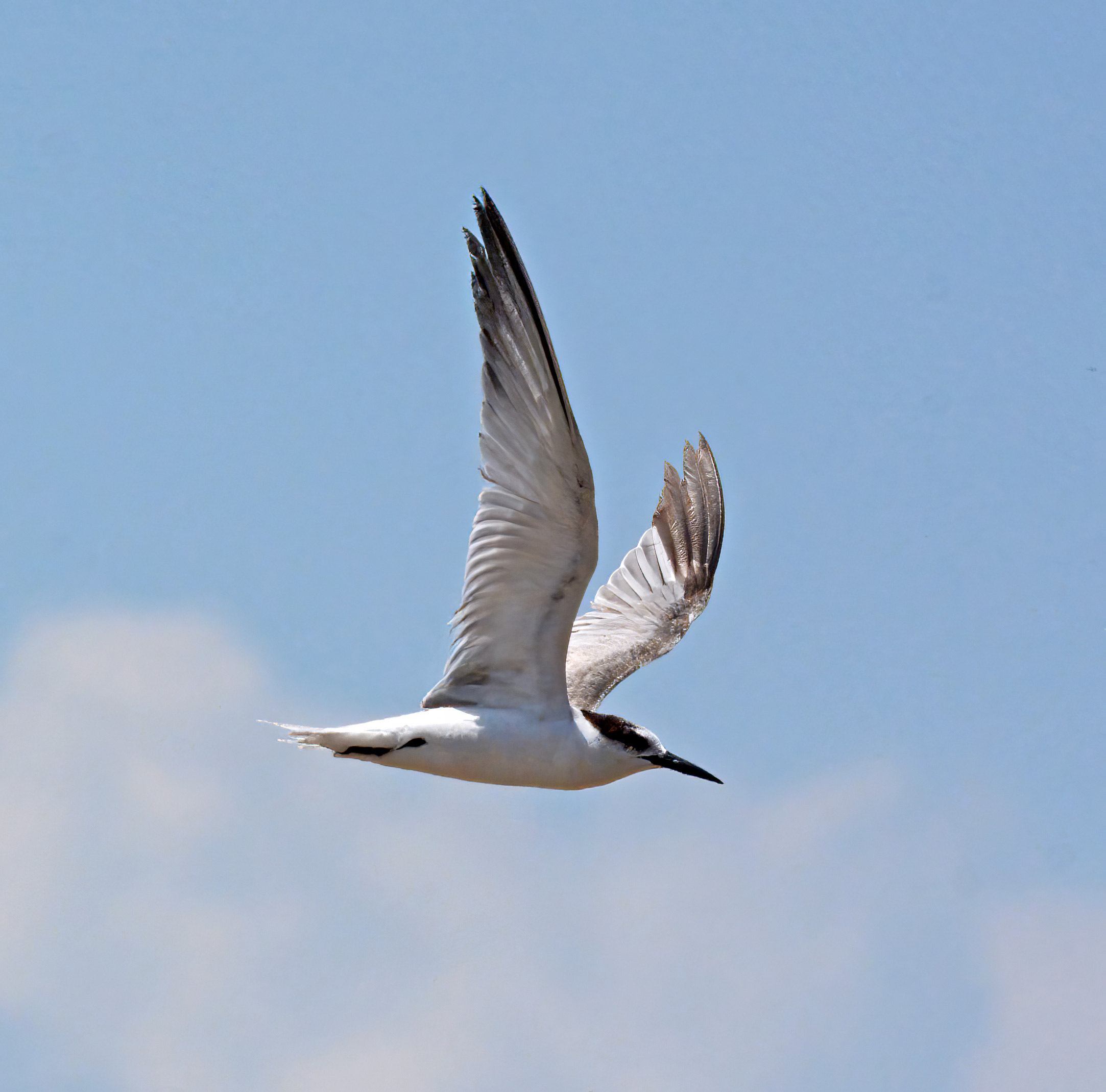
Saunder's Tern (Sternula saundersi), Saadani National Park |
|
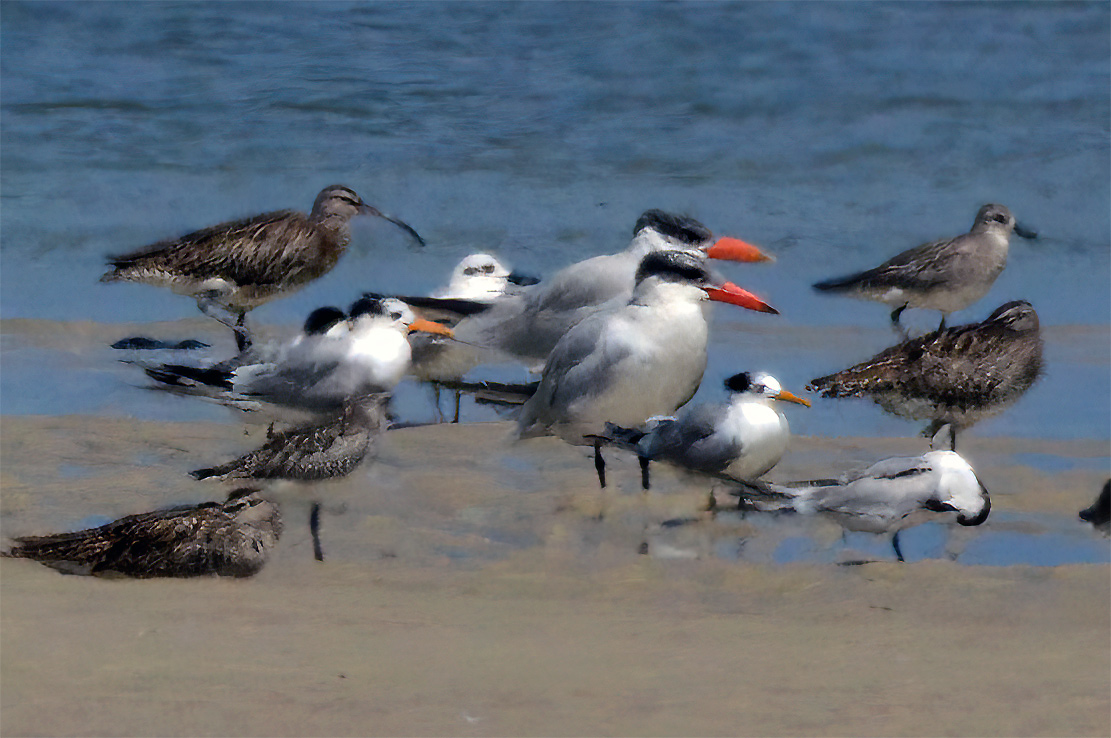
Caspian Tern (Hydroprogne caspia) (with red bill, largest tern in the world), Bagamoyo (heavily cropped!) |
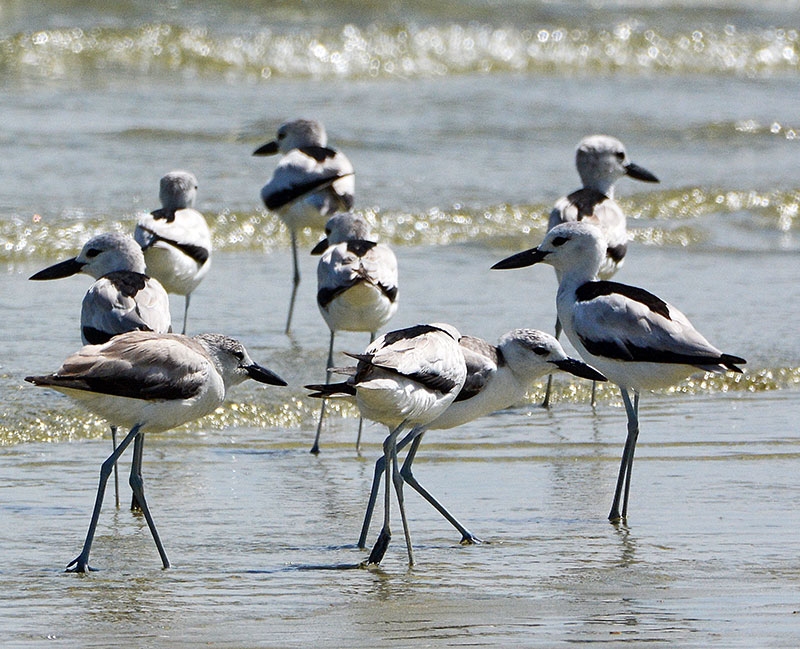
Crab Plover (Dromas ardeola), Bagamoyo |
|
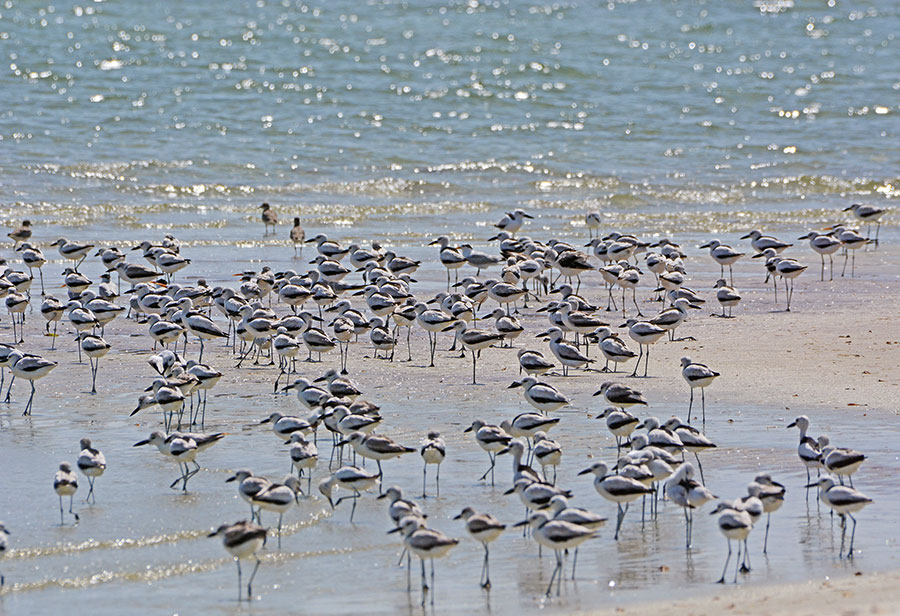
Crab Plover, Bagamoyo |
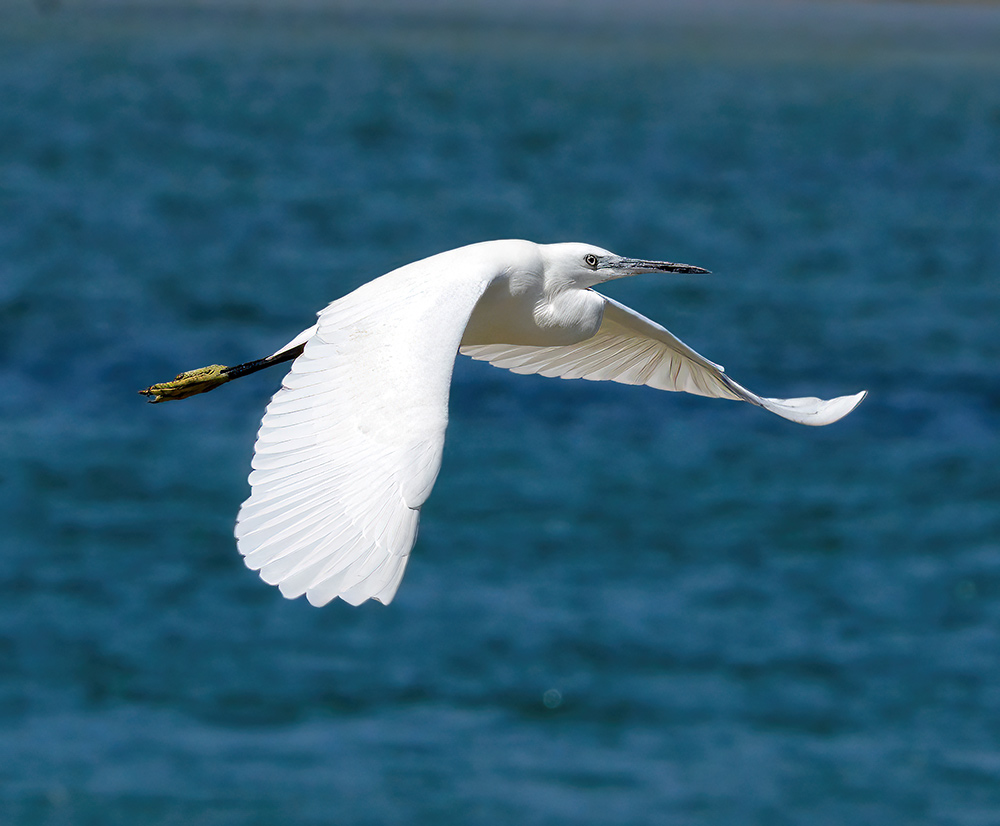
Little Egret (Egretta garzetta), Bomani Beach Bungalows
|
|
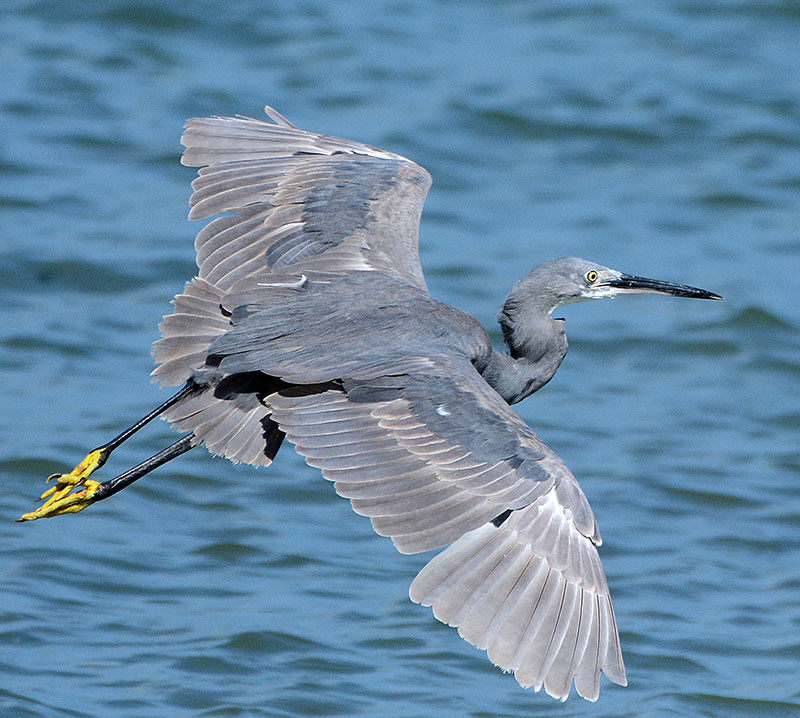
Little Egret, or more likely Dimorphic Egret, dark morph (Egretta dimorpha), Bagamoyo. Little and Dimorphic Egret is now considered the same species by some experts |
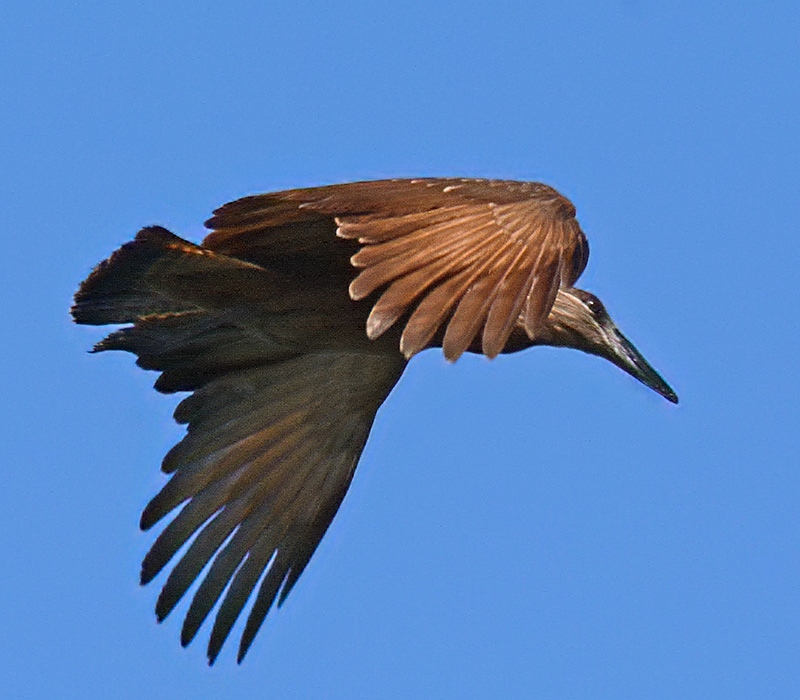
Hamerkop (Scopus umbretta), Bomani Beach Bungalows |
|
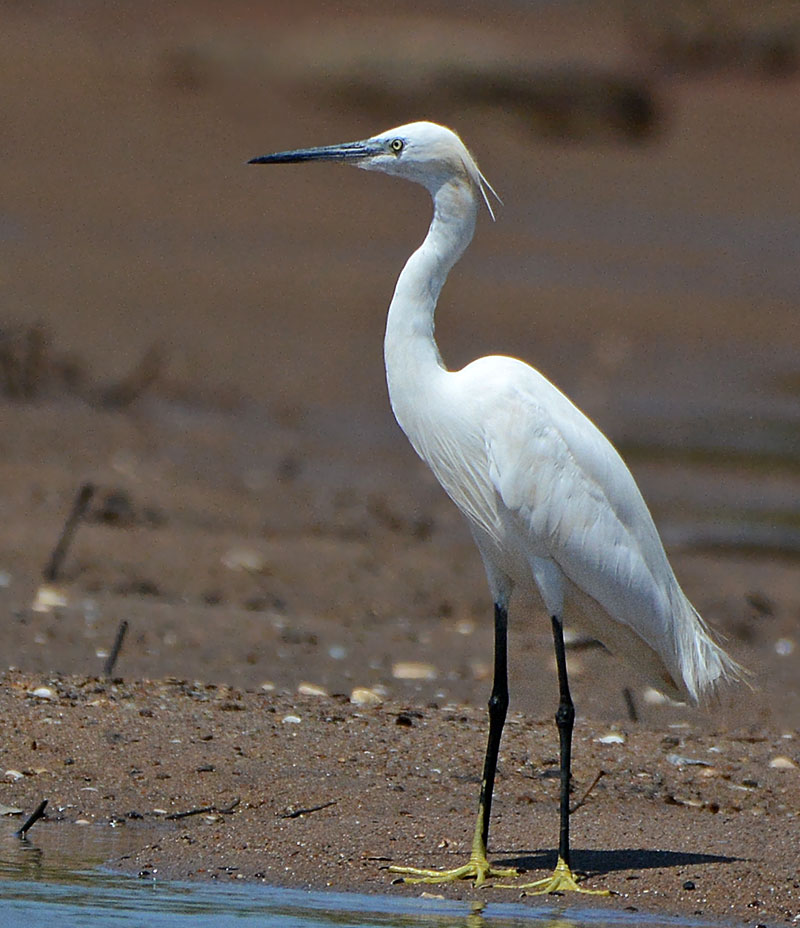
Dimorphic Egret (Egretta dimorpha), Wami River, Saadani National Park |
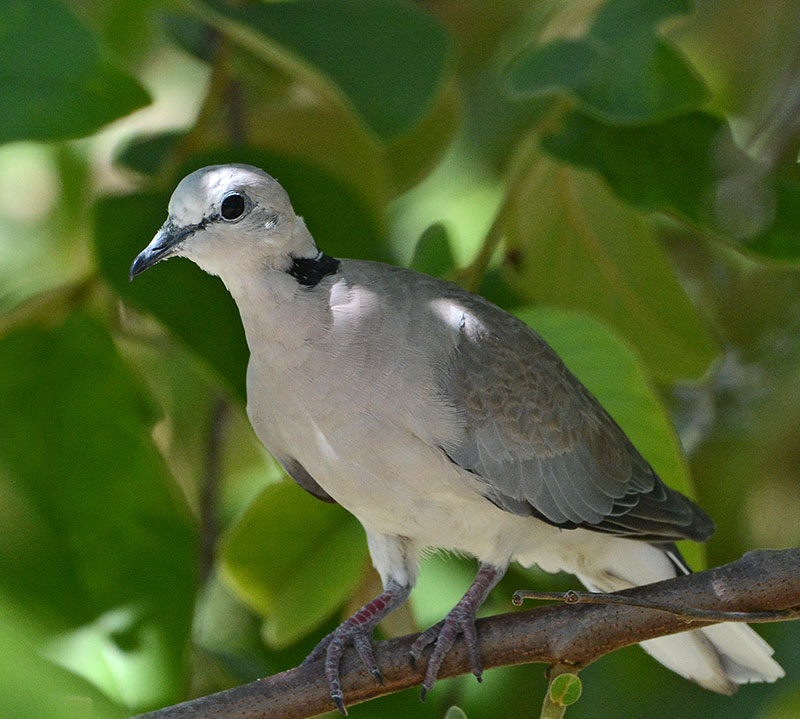
Ring-necked Dove (Streptopelia capicola), Bomani Beach Bungalows |
|
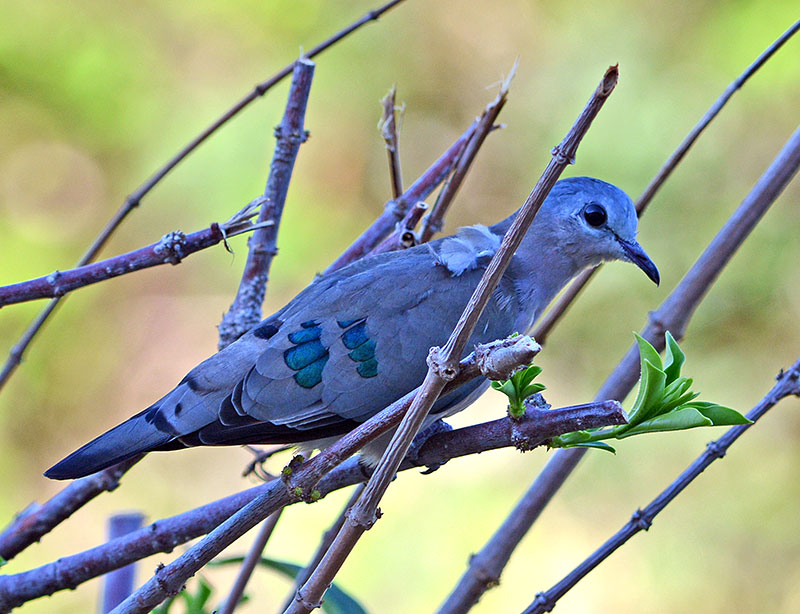
Emerald-spotted Wood-dove (Turtur chalcospilos), Bomani Beach Bungalows |
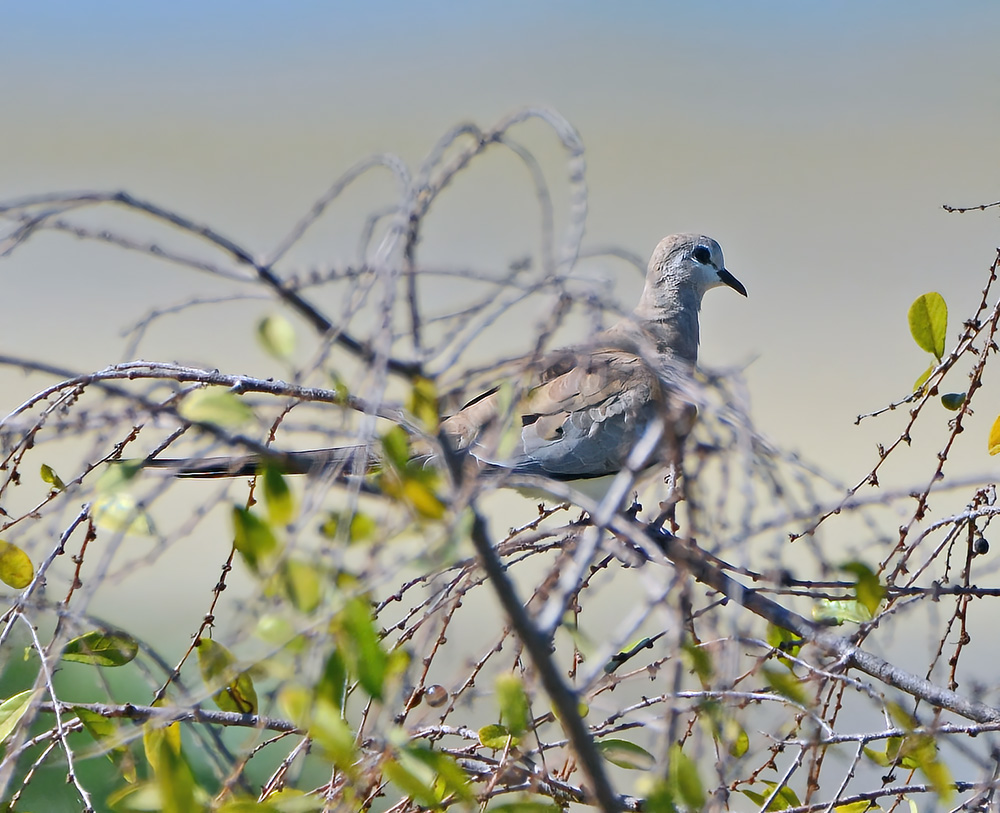
Namaqua Dove (Oena capensis), Bomani Beach Bungalows |
|
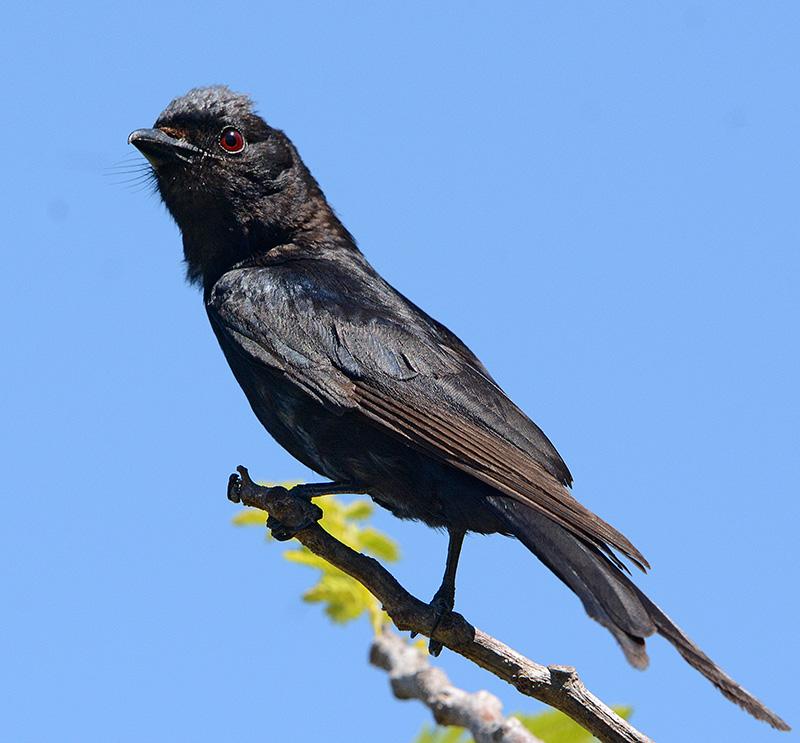
Fork-tailed Drongo (Dicrurus adsimilis fugax), Bomani Beach Bungalows |
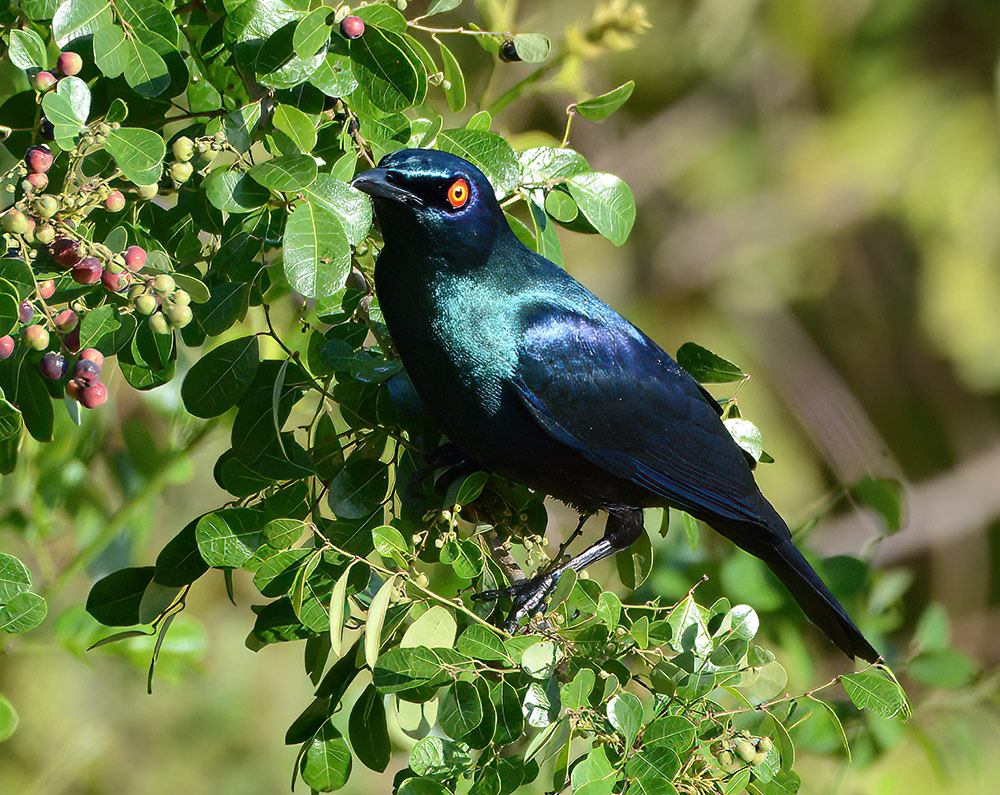
Black-bellied Starling (Lamprotornis corruscus), Bomani Beach Bungalows |
|
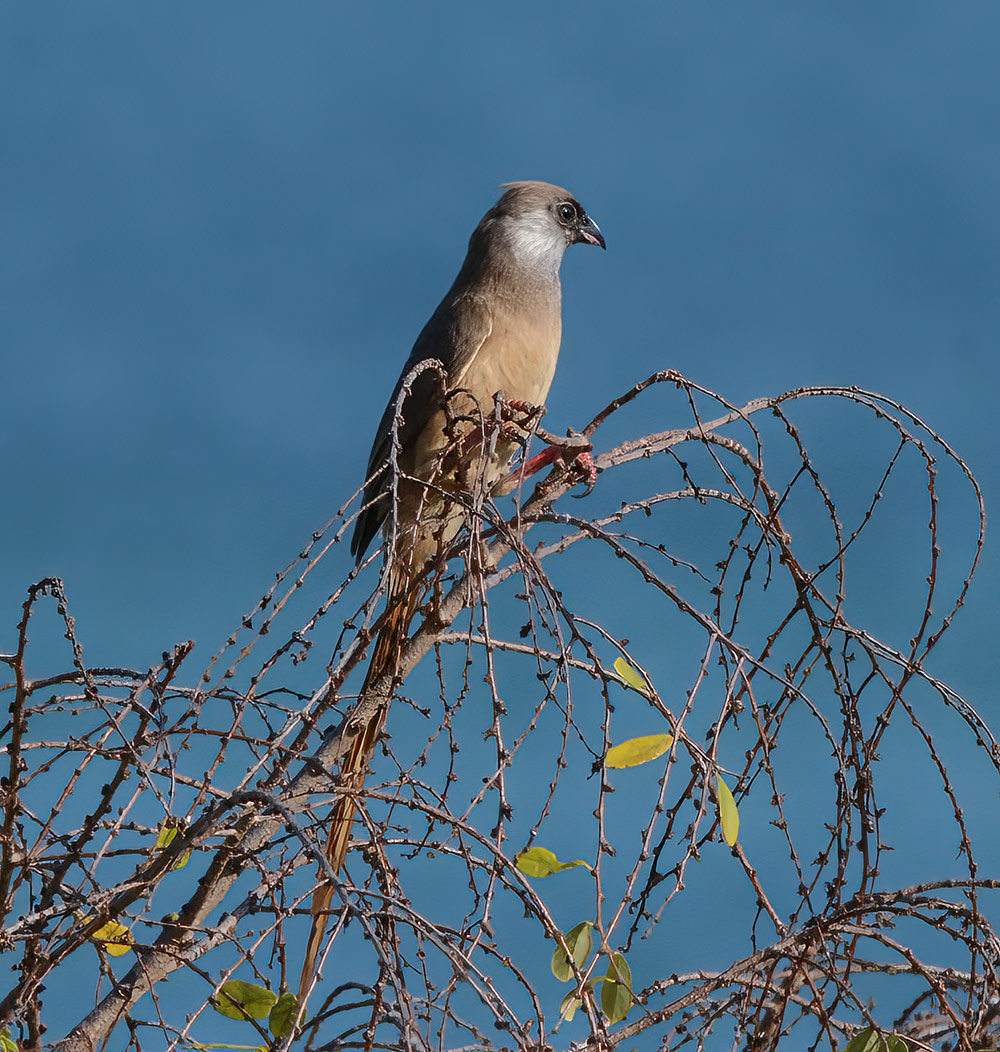
Speckled Mousebird (Colius striatus), Bomani Beach Bungalows |
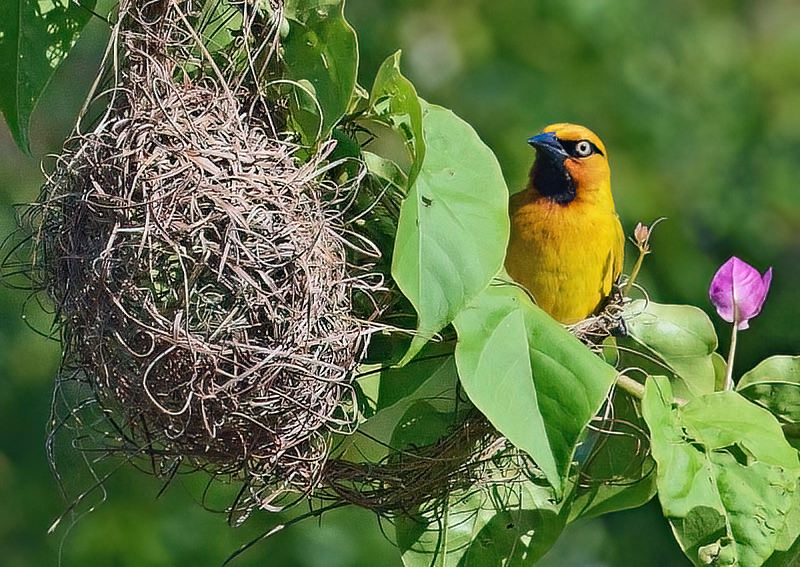
Spectacled Weaver - male (Ploceus ocularis), Bomani Beach Bungalows |
|
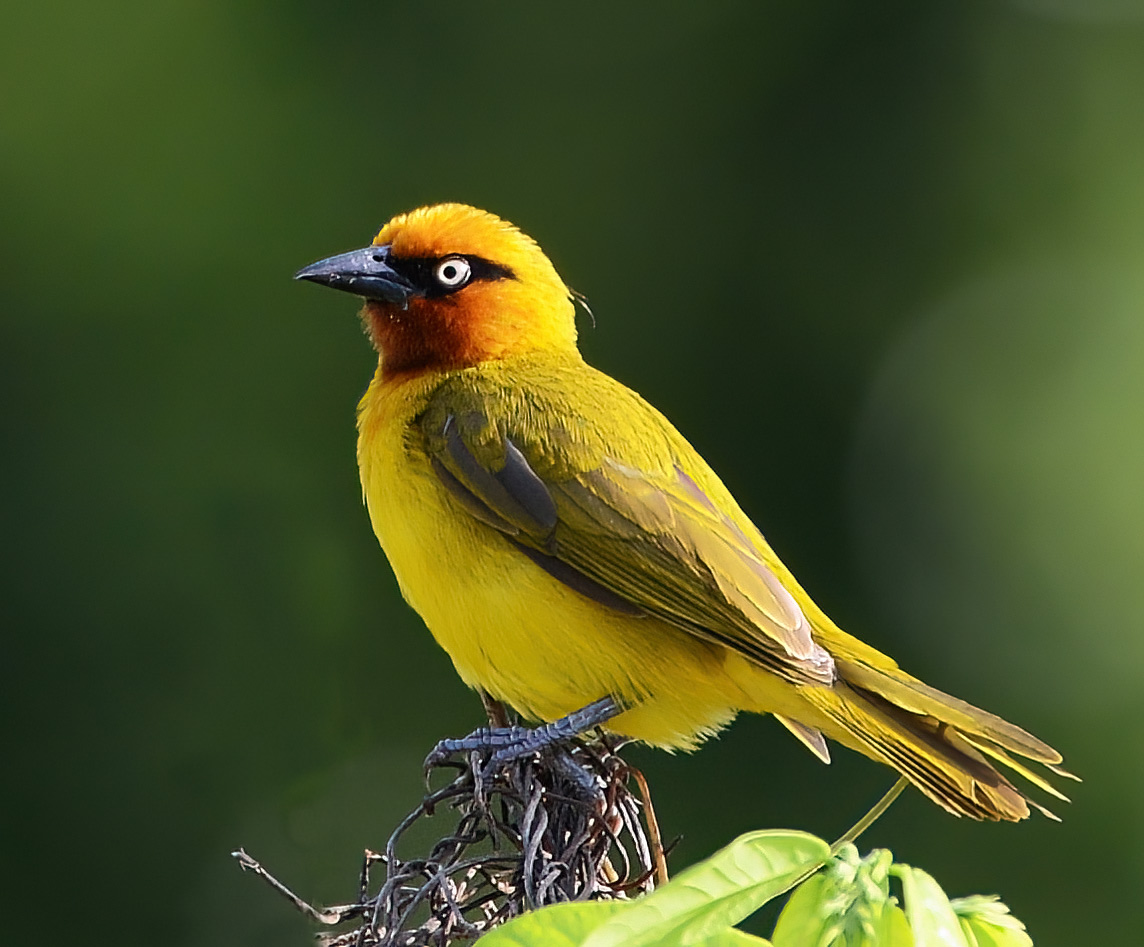
Spectacled Weaver - female (Ploceus ocularis), Bomani Beach Bungalows |
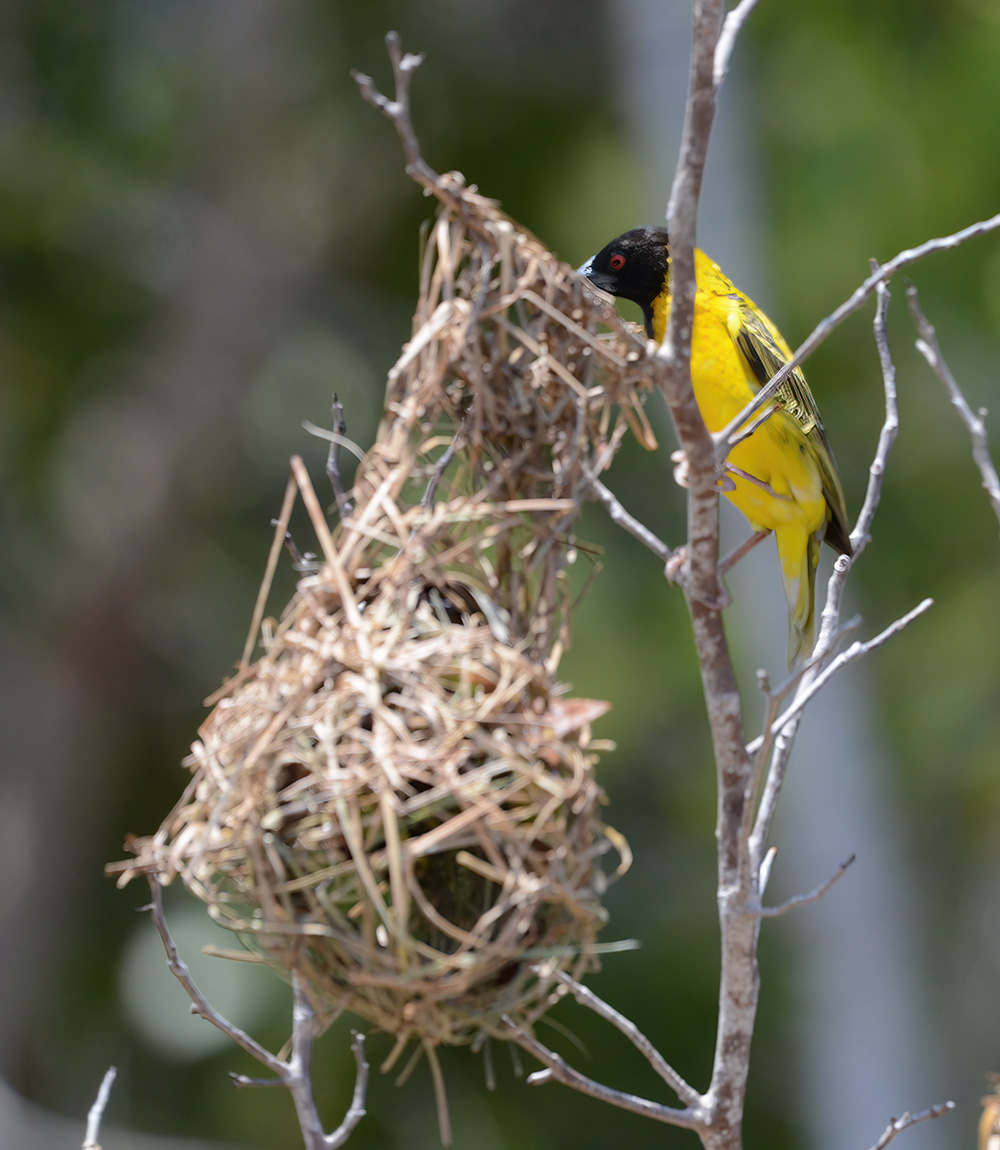
Nest-building Village Weaver (Ploceus cucullatus), Saadani National Park |
|
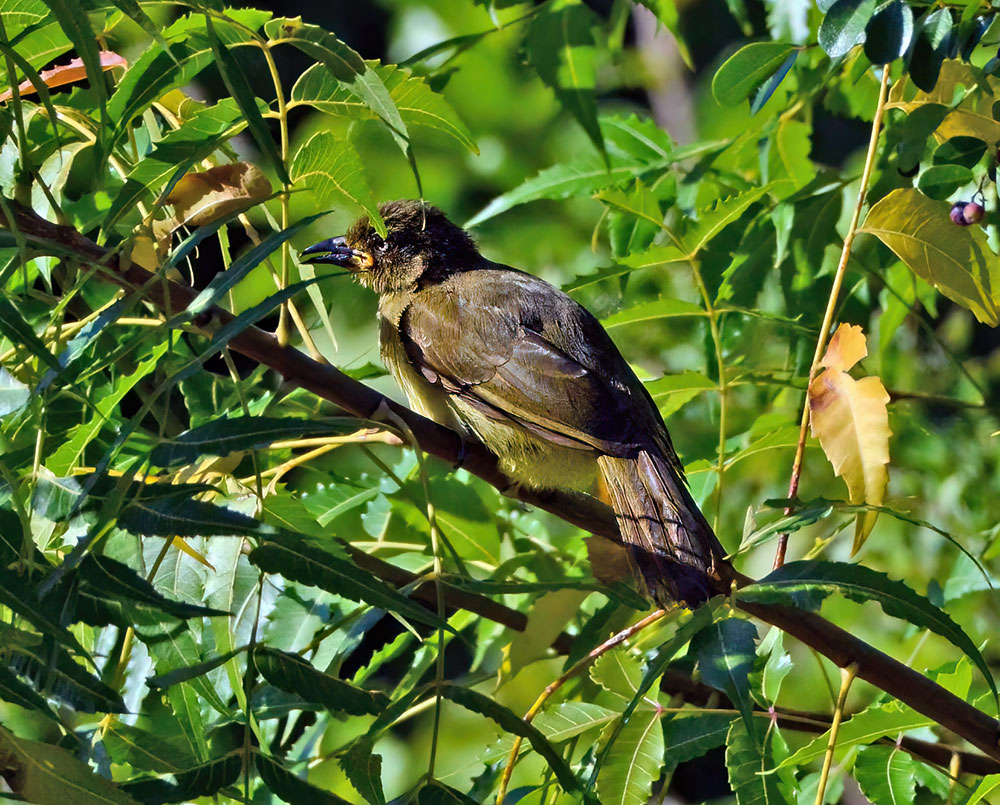
Sombre Greenbul (Andropadus importunus), Bomani Beach Bungalows |

Tropical butterfly. I think this may be a Round-winged Orangetip (Colotis euippe)
|
|
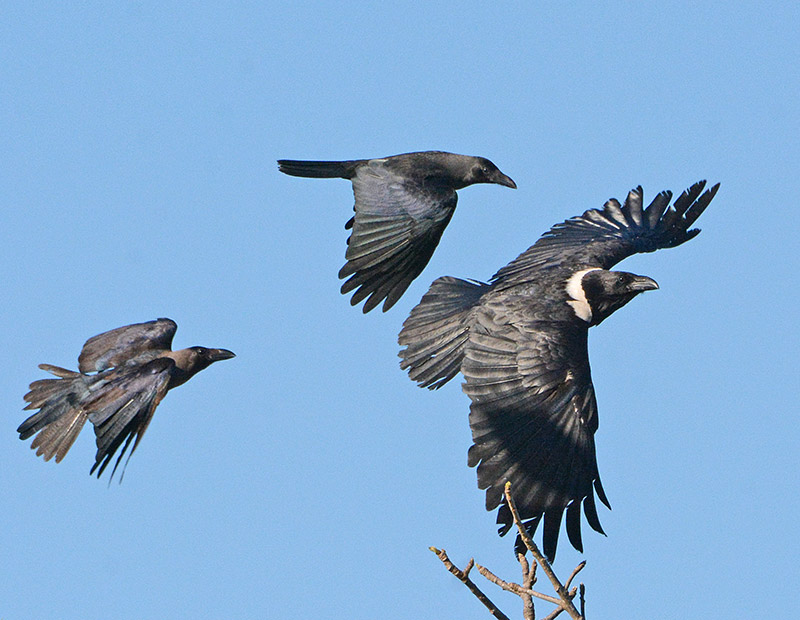
Indian House Crows harassing a Pied Crow. The first species is introduced to the region, and considered a pest species since it decimate local bird wildlife by eating eggs and chicks. The Pied Crow, which is the natural crow in the region, is larger, but still was chased away by the more aggressive House Crows
|
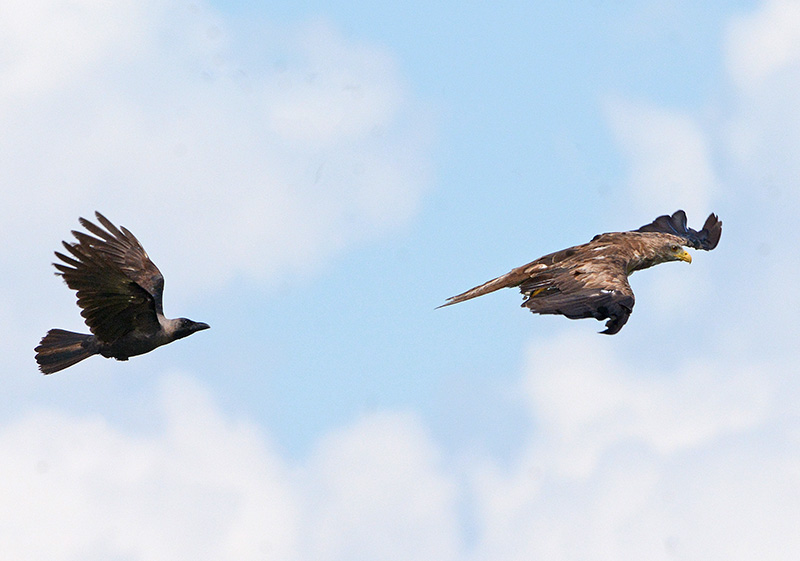
Here chasing away a Yellow-billed Kite
|
|
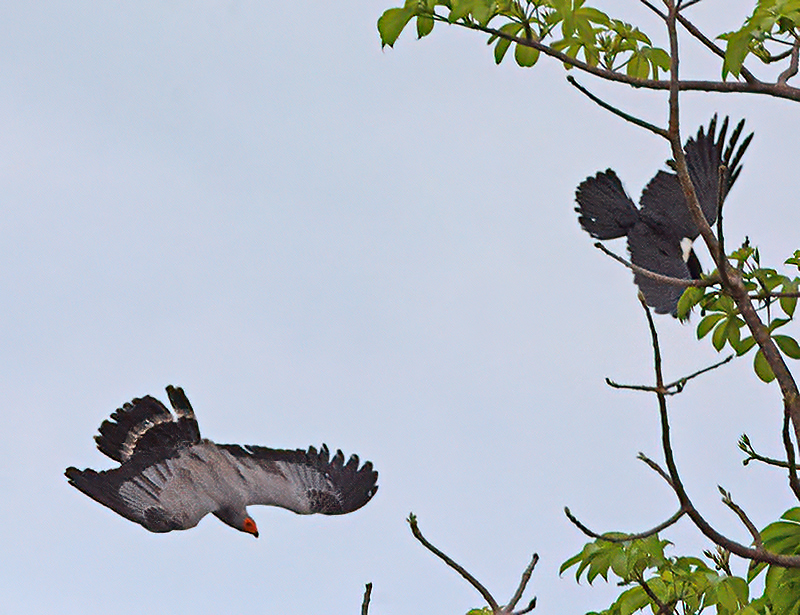
African Harrier Hawk, here with a Pied Crow
|
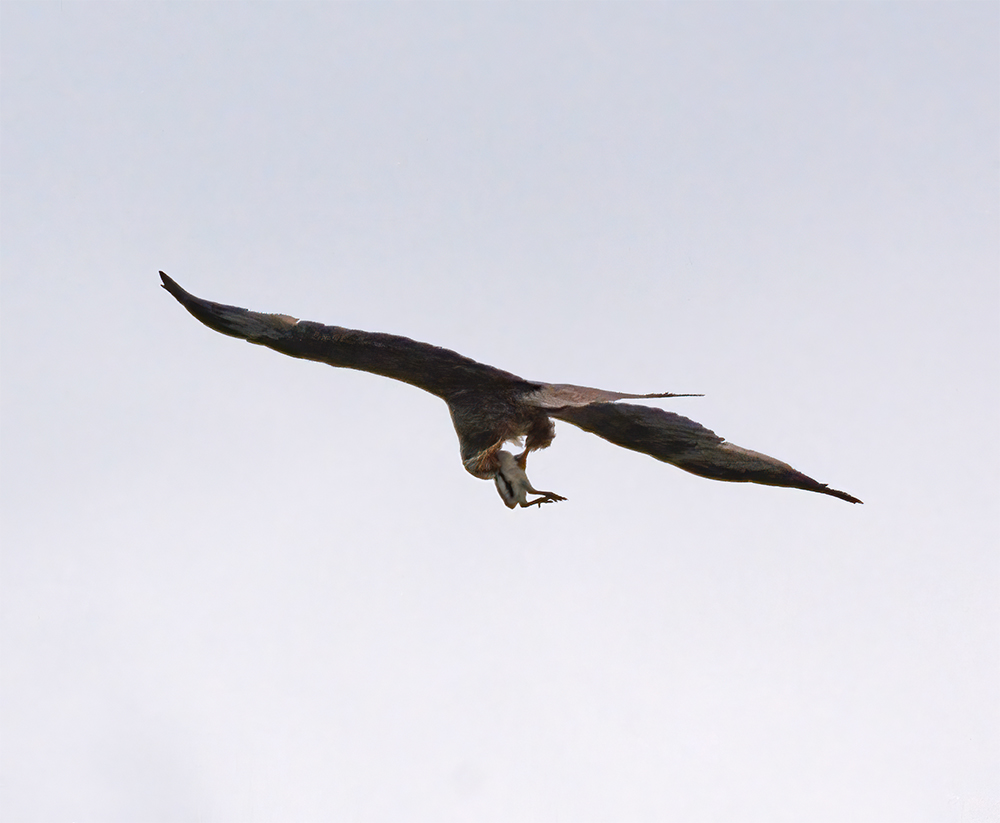
Yellow-billed Kite with prey, looks like a Crab Plover? |
|
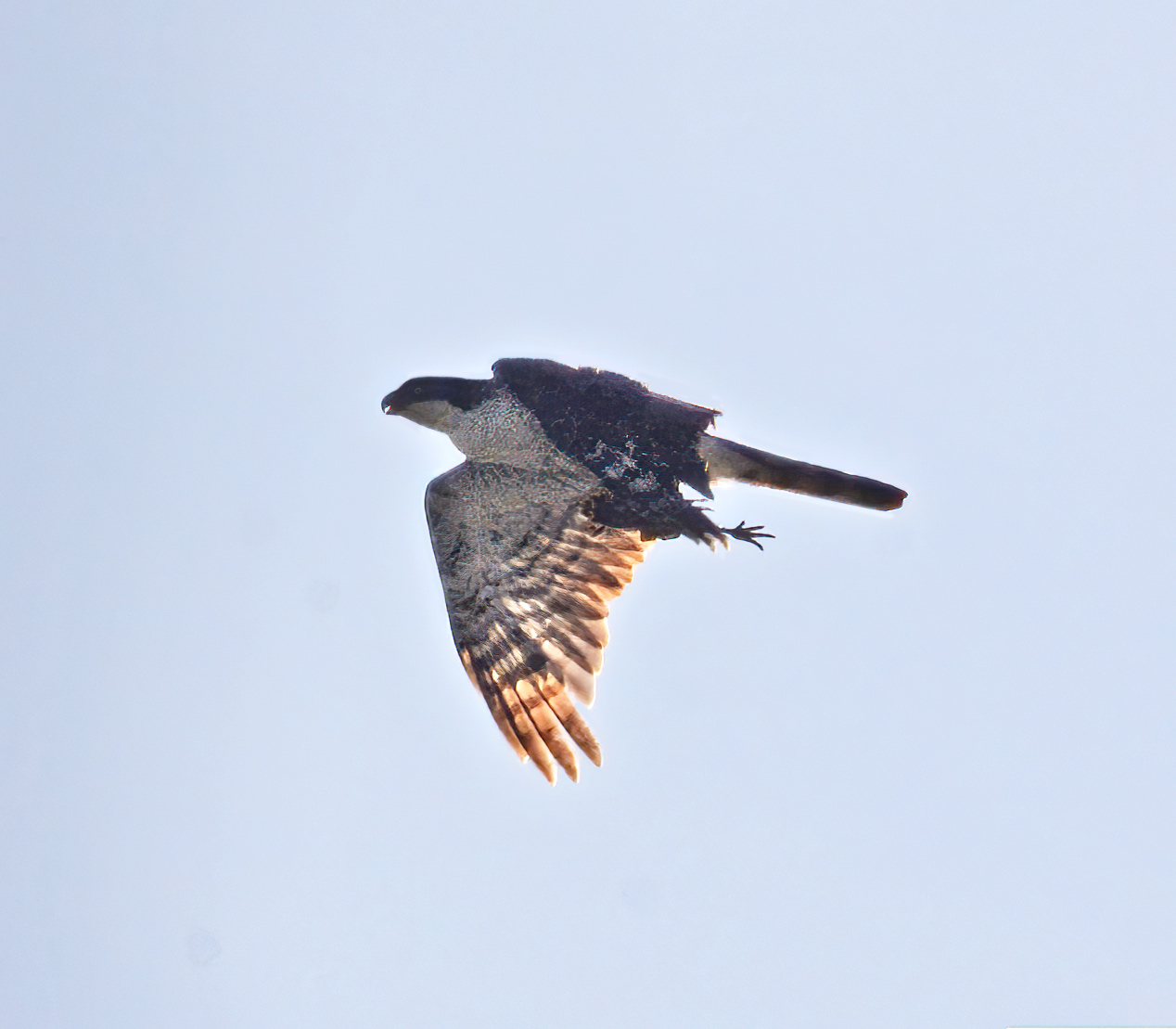
Poor image of a Black Goshawk (Accipiter melanoleucus) with a wader prey |
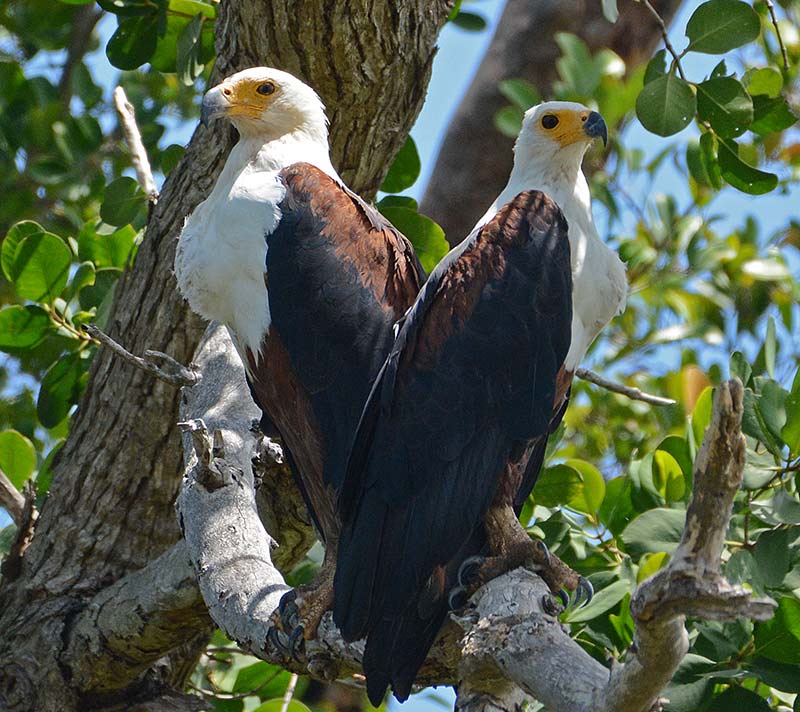
African Fish Eagle (Haliaeetus vocifer), Wami River, Saadani National Park |
|
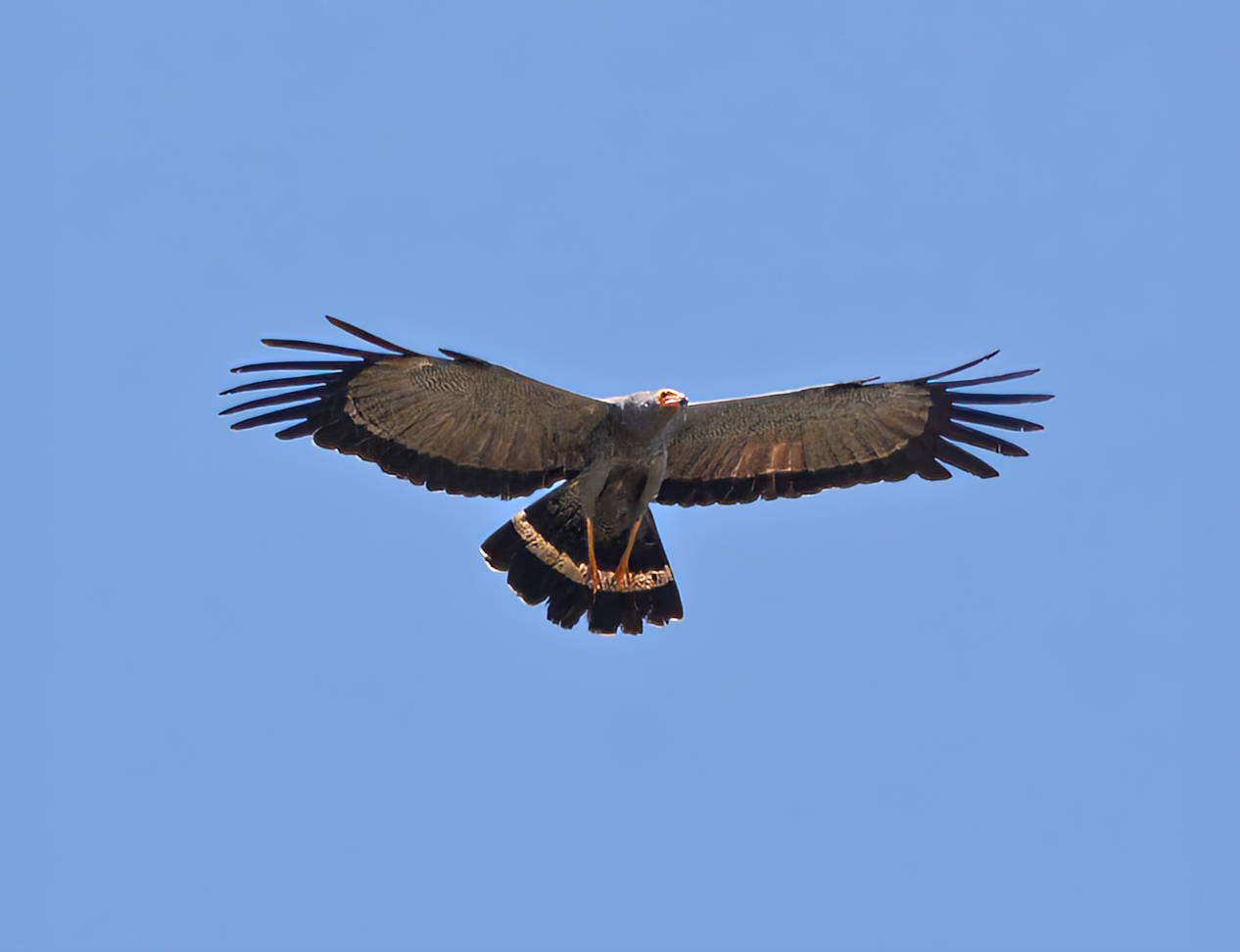
African Harrier Hawk (Polyboroides typus), Bomani Beach Bungalows |
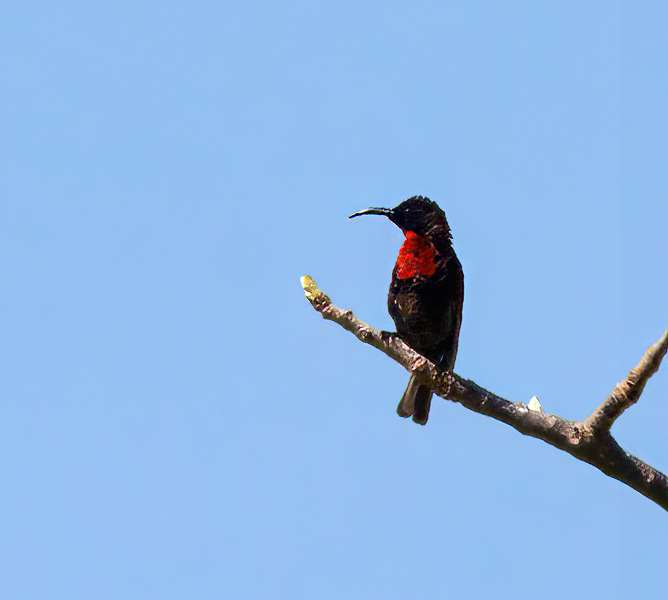
Scarlet-chested Sundbird (Cinnyris bifasciatus), Bomani Beach Bungalows
|
|
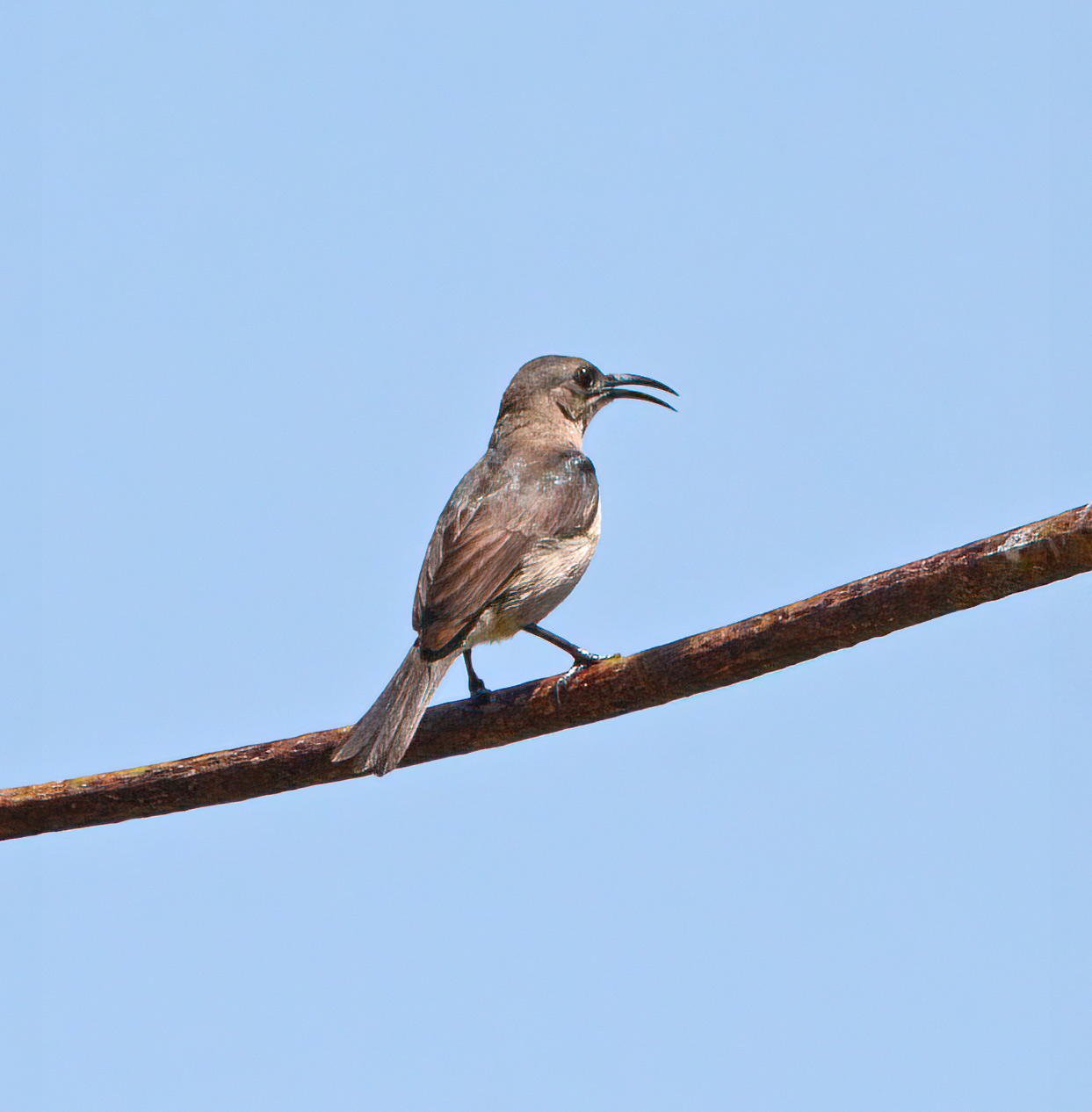
Mouse-colored Sunbird (Cyanomitra veroxii), Bomani Beach Bungalows
|
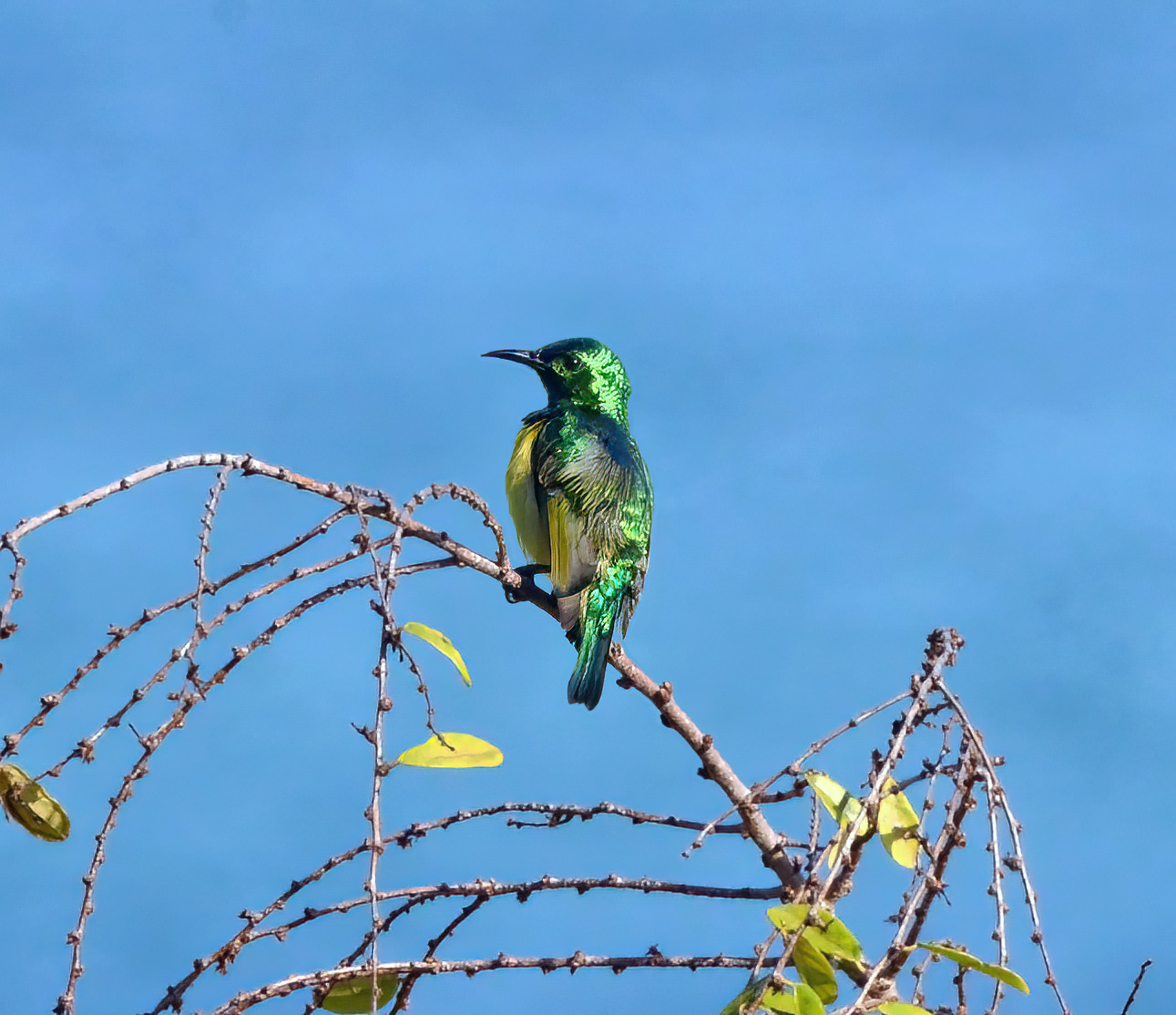
Collared Sunbird (Hedydipna collaris), Bomani Beach Bungalows |
|
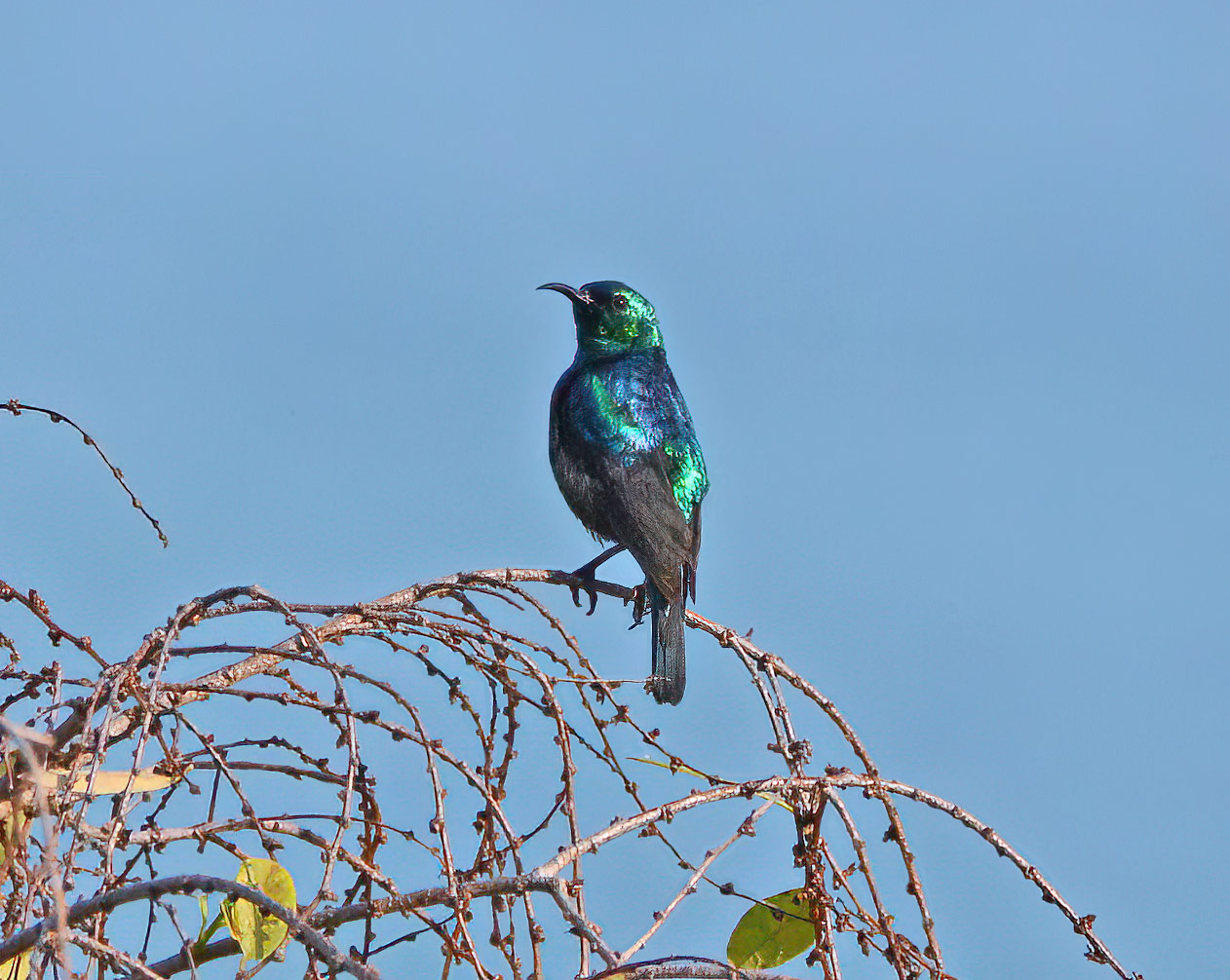
Purple-banded Sunbird (Cinnyris bifasciatus), Bomani Beach Bungalows |
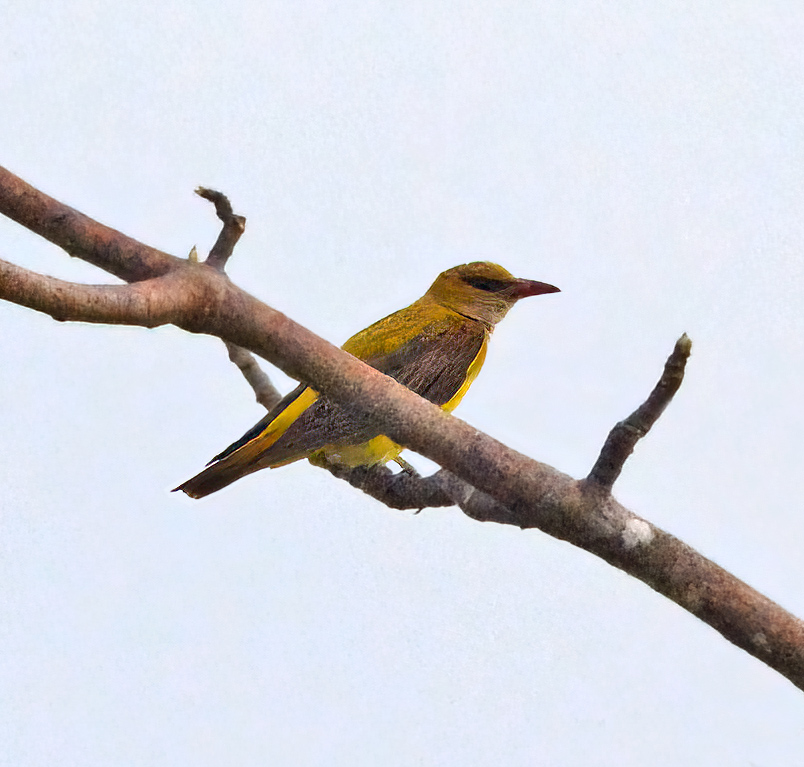
Eurasian Golden Oriole (Oriolus oriolus), Bomani Beach Bungalows |
|
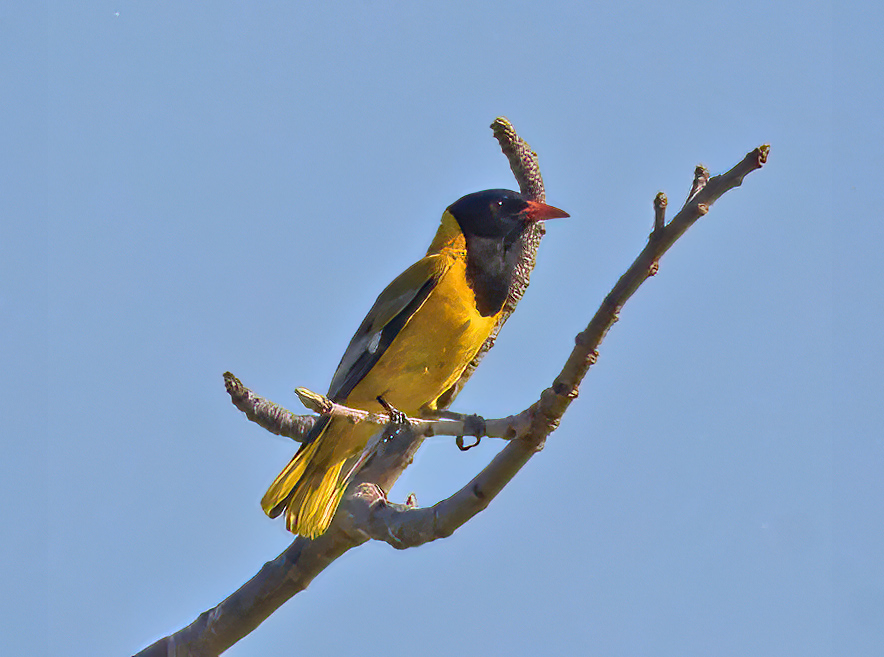
African Black-headed Oriole (Oriolus larvatus), Bomani Beach Bungalows |
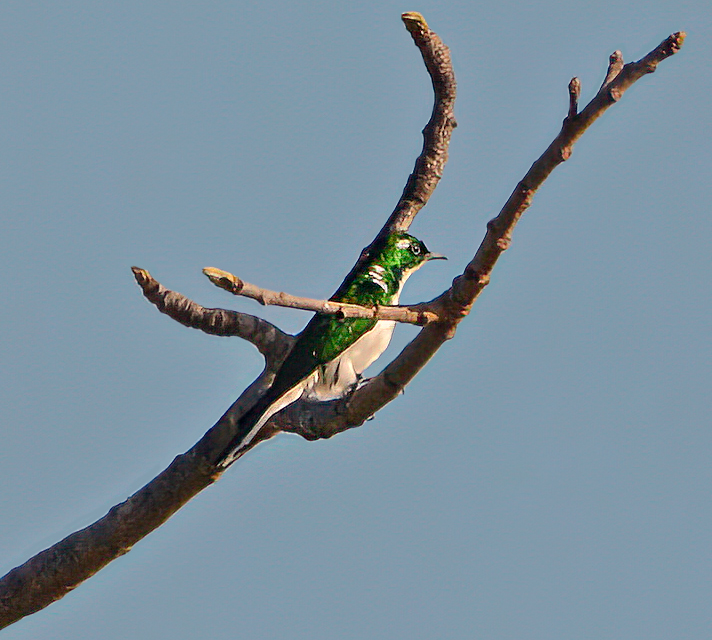
Klaas's Cuckoo (Chrysococcyx klaas), Bomani Beach Bungalows |
|
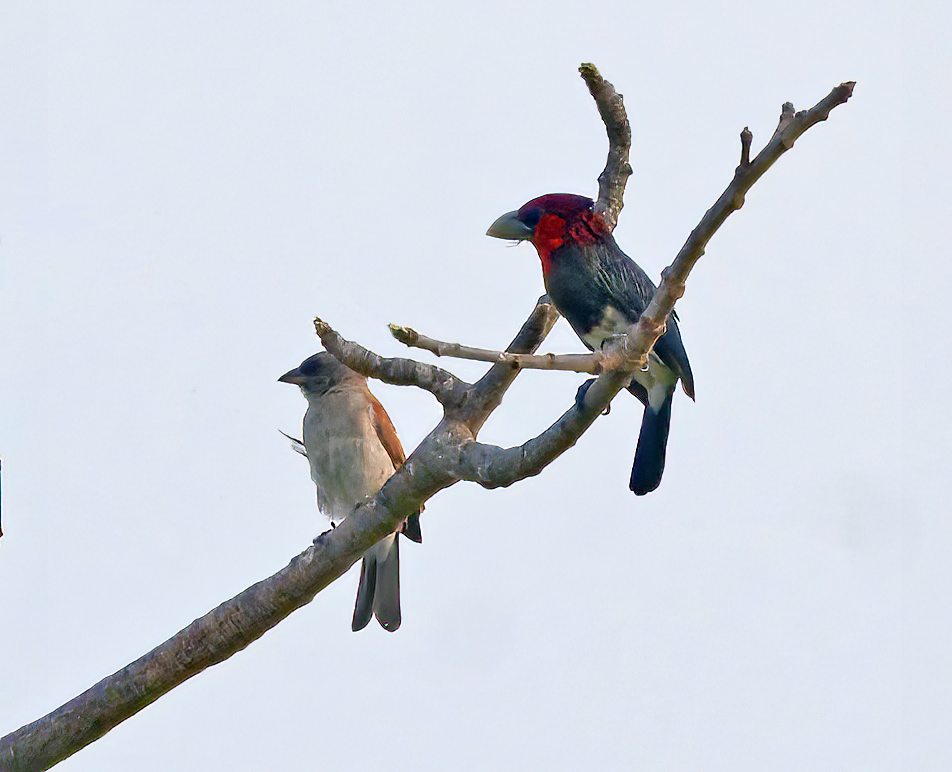
Northern Grey-headed Sparrow (Passer griseus) with a Brown-Breasted Barbet |
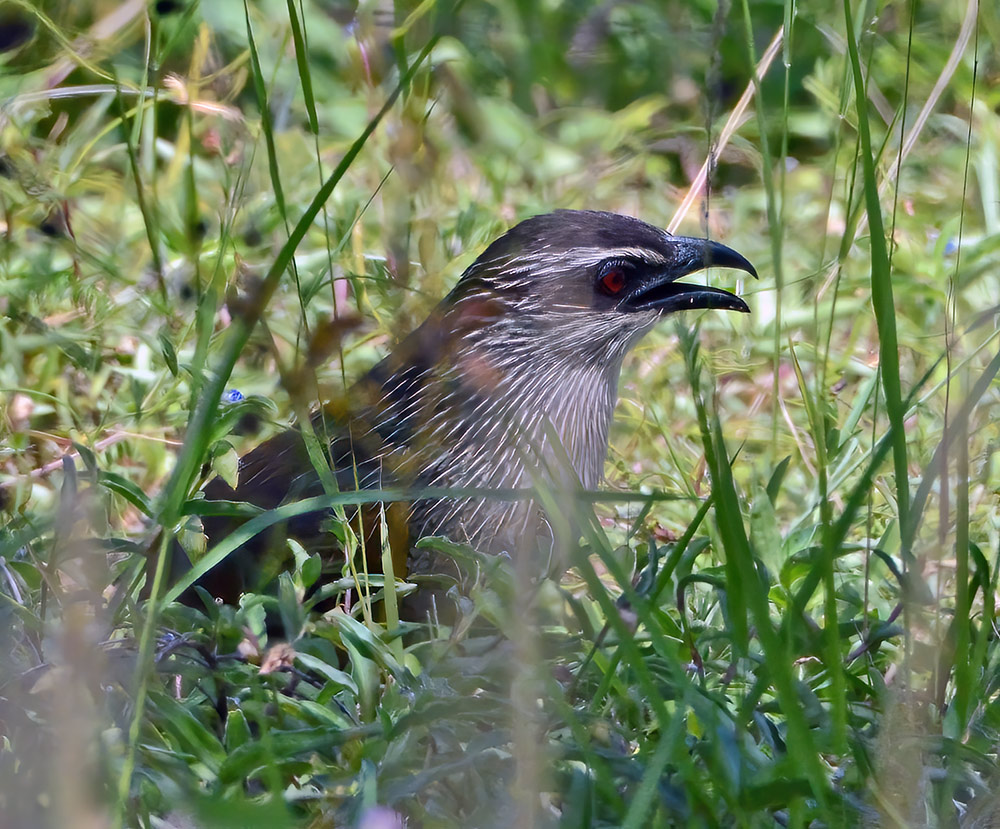
White-browed Coucal (Centropus superciliosus), Bomani Beach Bungalows |
|
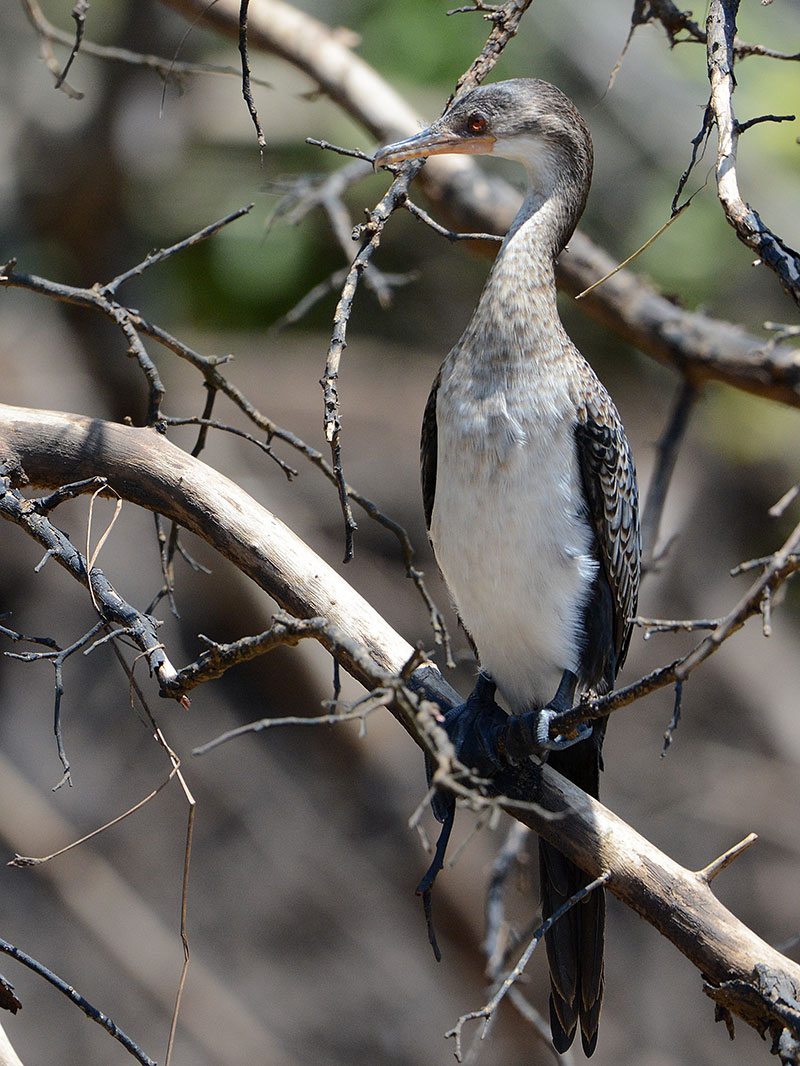
Long-tailed Cormorant (Microcarbo africanus), Wami River, Saadani National Park |
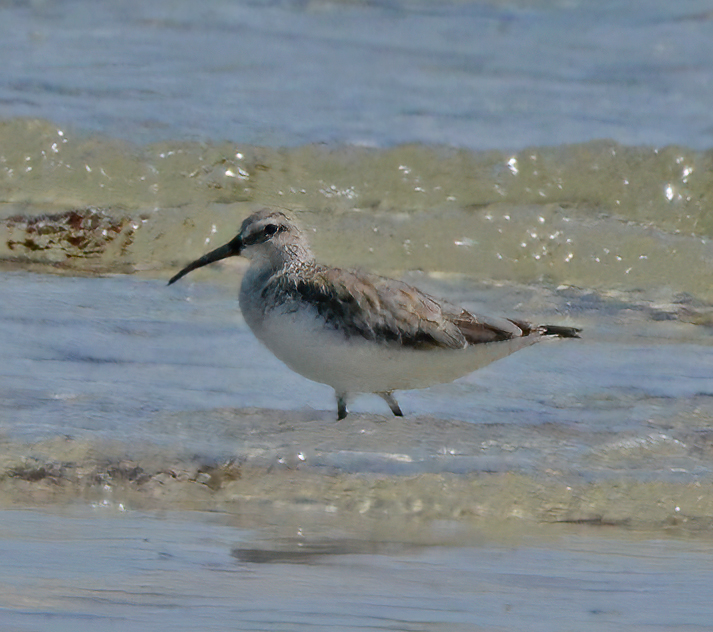
Curlew Sandpiper - Tundrasnipe (Calidris ferruginea) |
|
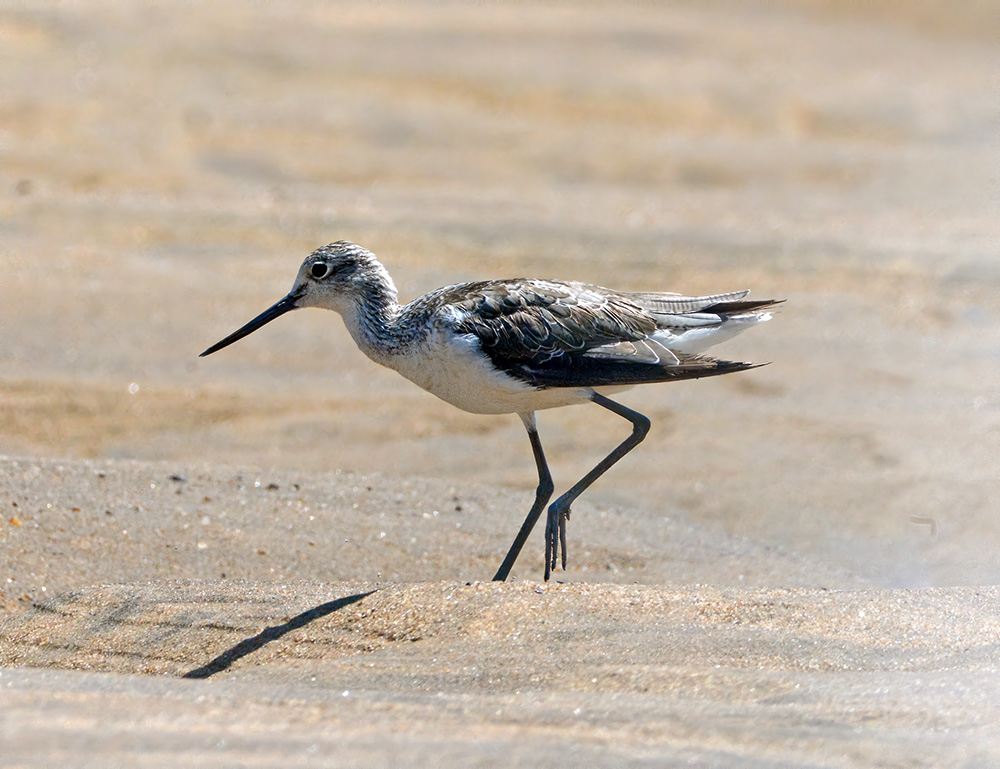
Common Greenshank - Gluttsnipe (Tringa nebularia), Saadani National Park |
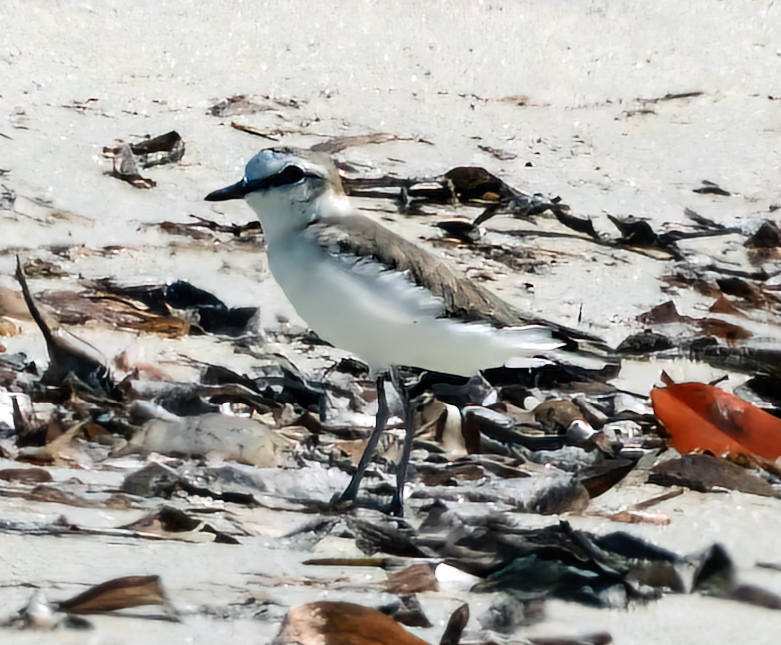
White-fronted Plover - Strandlo (Charadrius marginatus) |
|
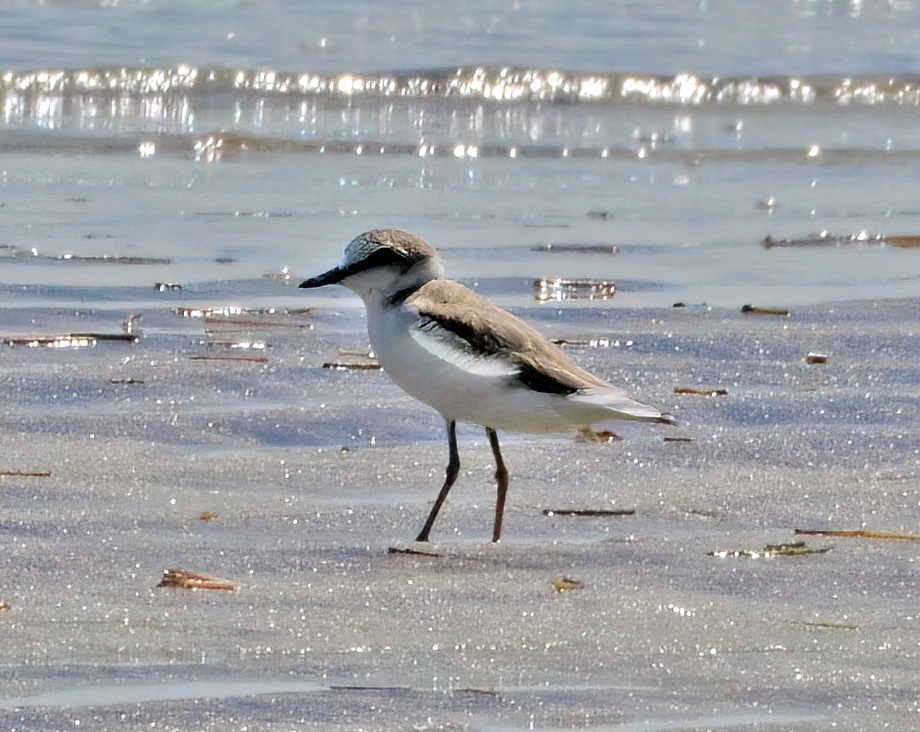
White-fronted Plover |
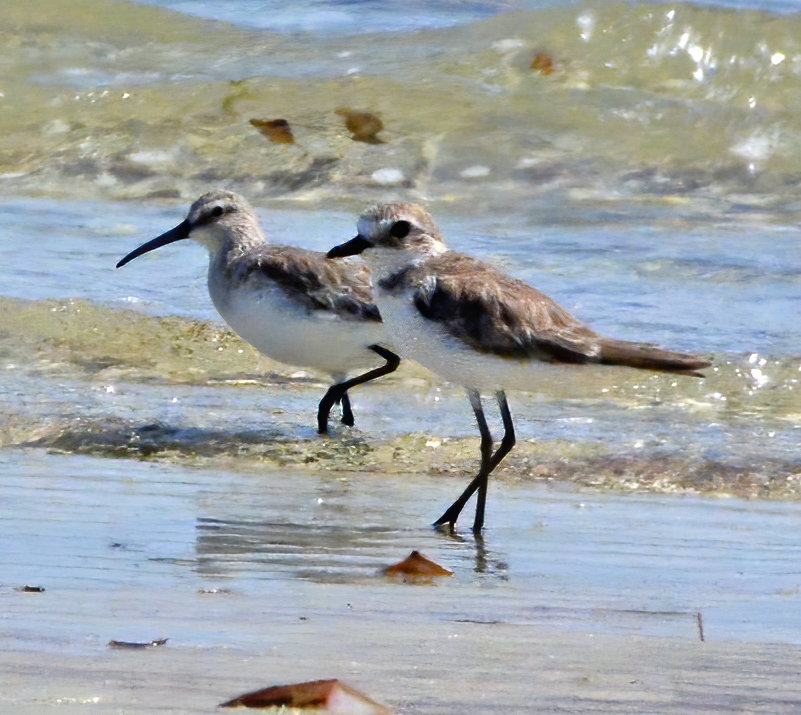
Greater Sandplover - Ørkenlo (Charadrius leschenaultii) in front of a Curlew Sandpiper |
|
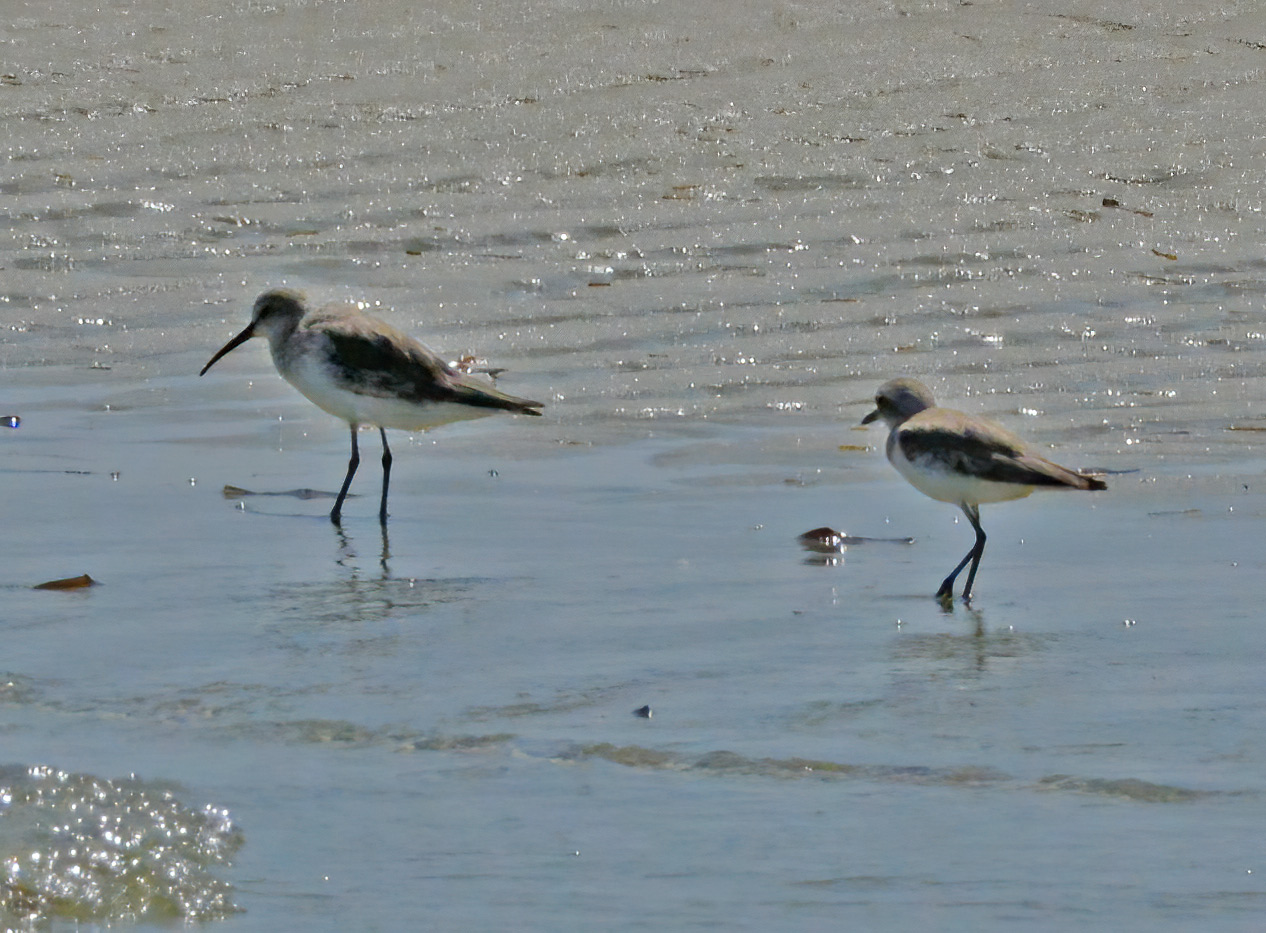
Size matter! A Lesser Sandplover - Mongollo (Charadrius mongolus), next to a Curlew Sandpiper (left) |
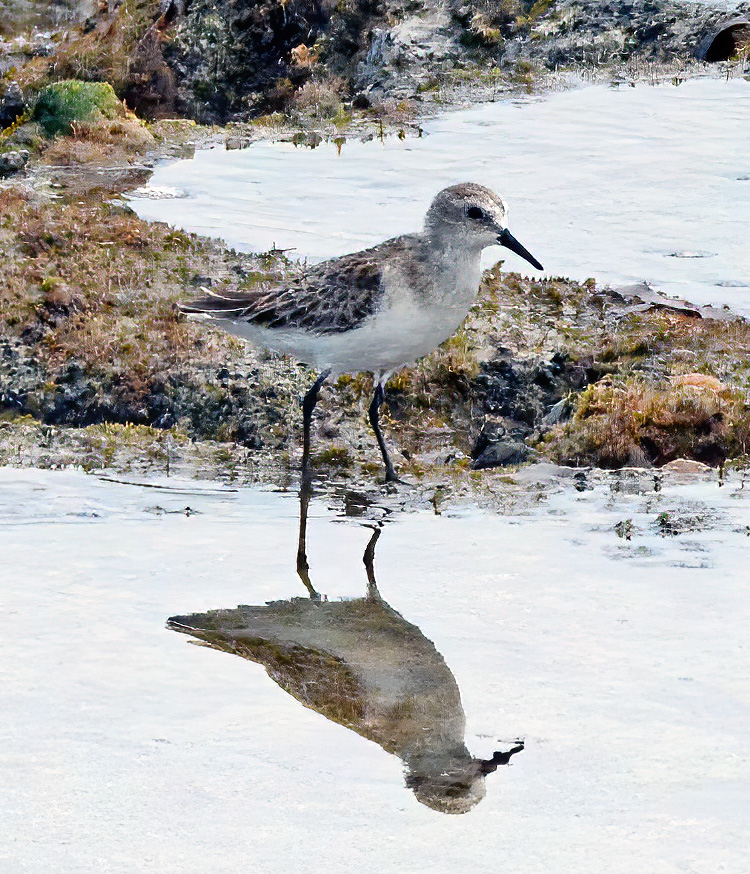
Little Stint - Dvergsnipe (Charadrius marginatus) |
|
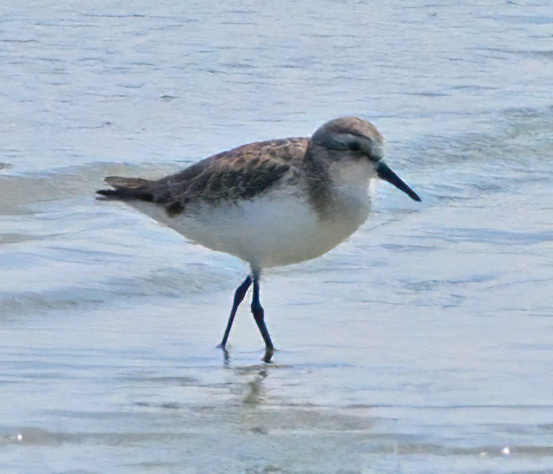
Little Stint - Dvergsnipe |
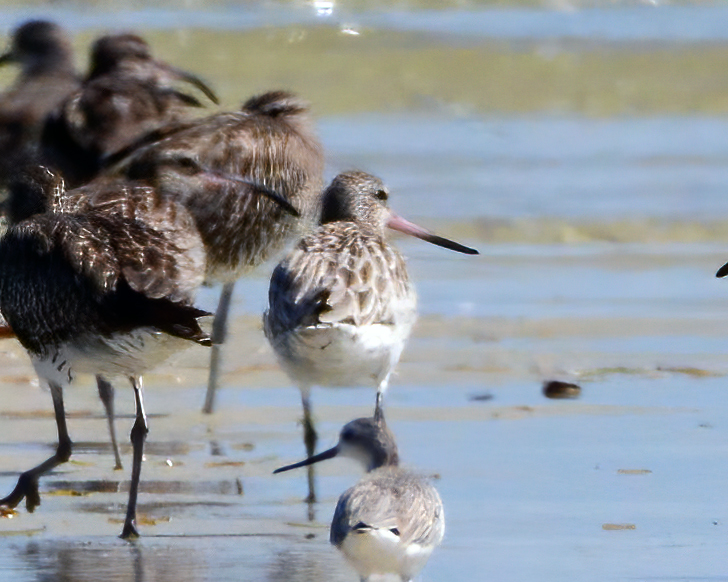
Bar-tailed Godwit - Lappsove (Limosa lapponica), with a Common Greenshank in front and Whimbrel to the left |
|
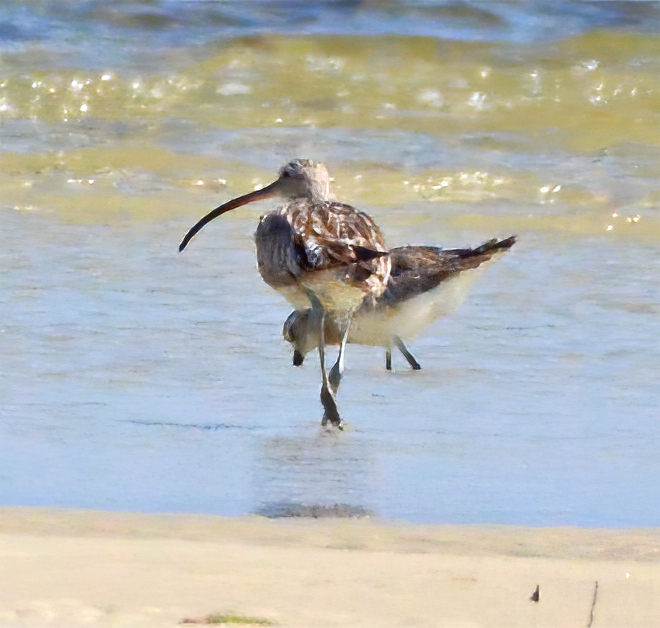
Eurasian Curlew - Storspove (Numenius arquata) |
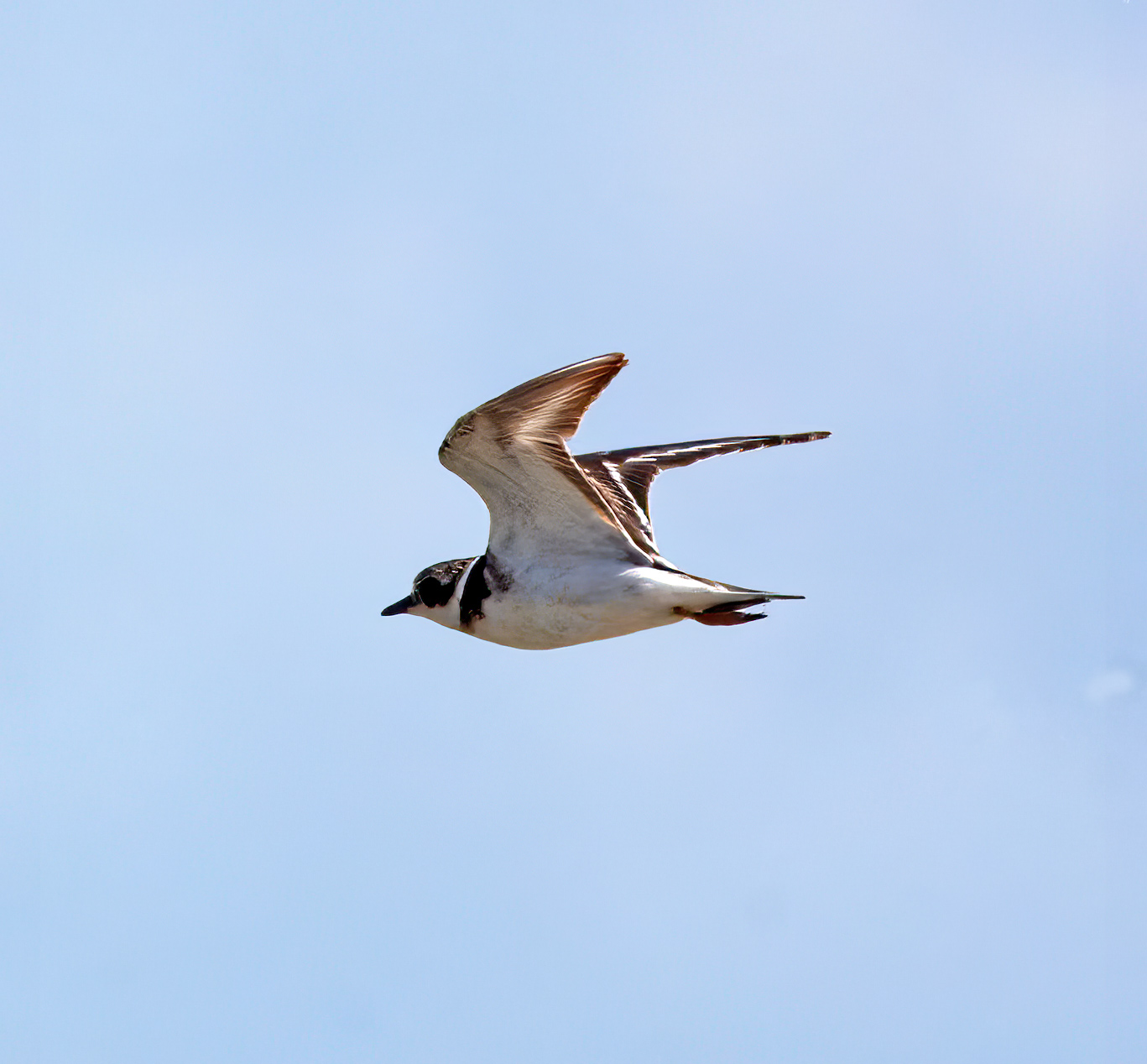
Common Ringed Plover - Sandlo (Charadrius hiaticula) |
|
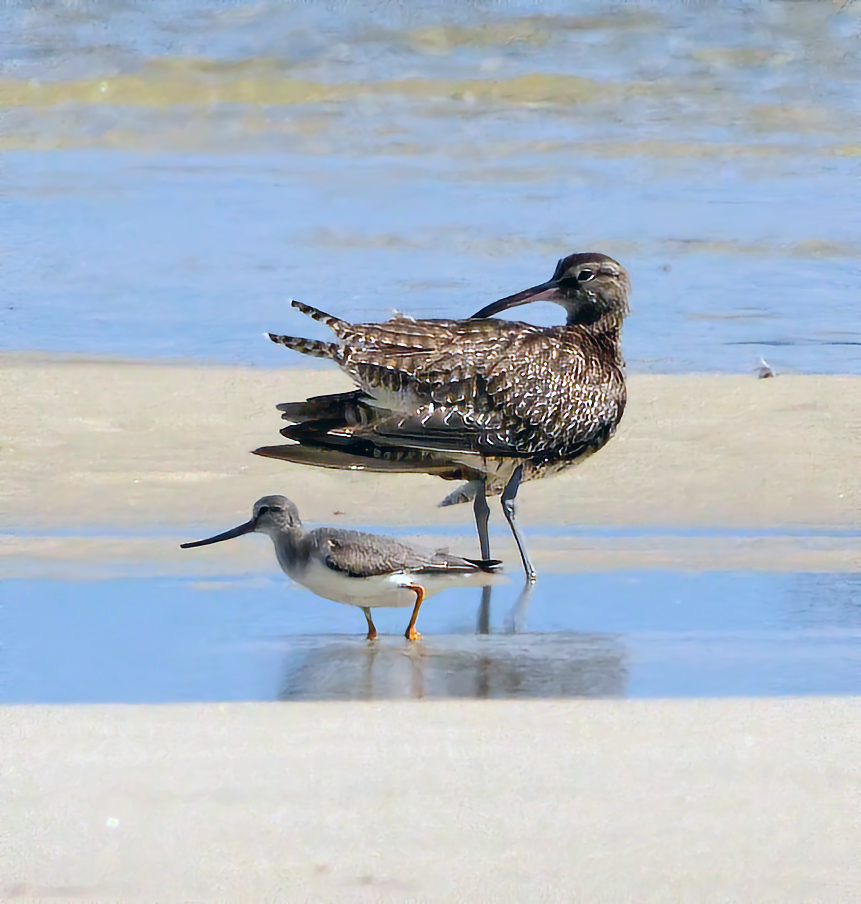
Terek Sandpiper - Tereksnipe (Xenus cinereus) and Whimbrel - Småspove (Numenius phaeopus) |
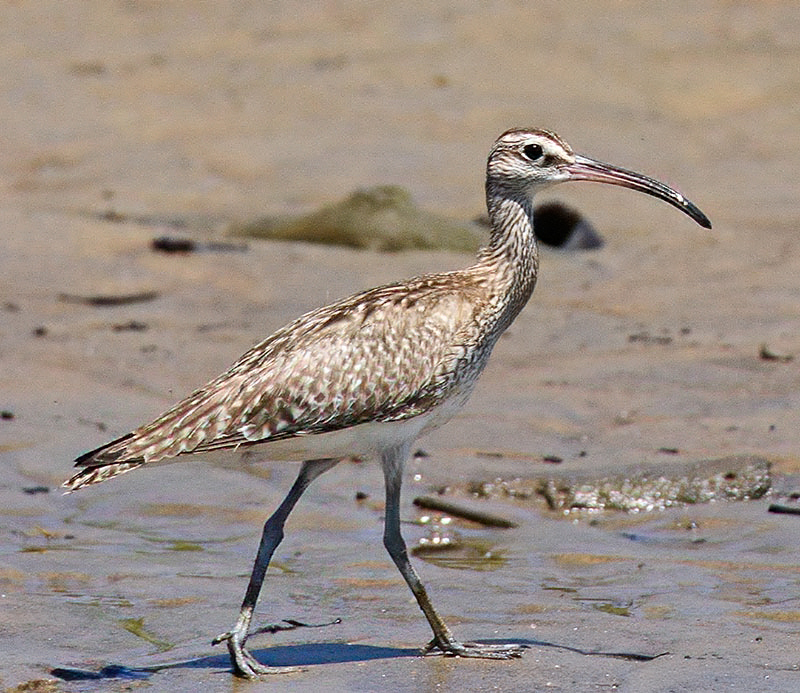
Whimbrel - Småsove (Numenius phaeopus), Wami River, Saadani National Park |
|
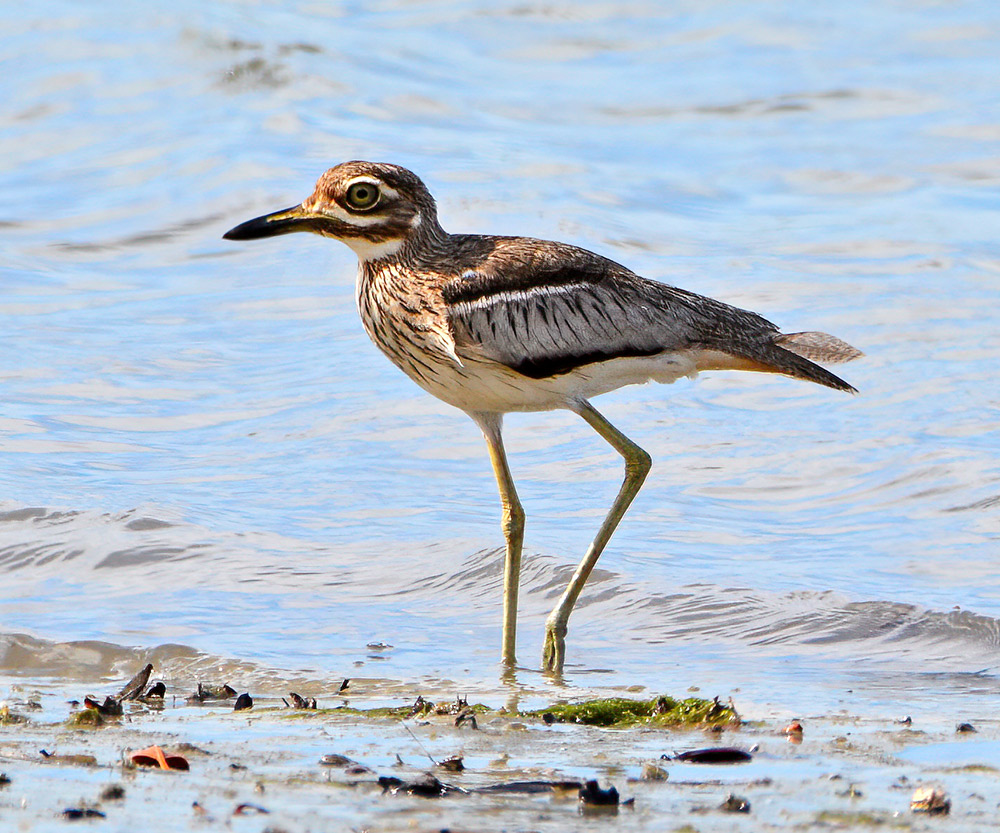
Water Thick-knee (Burhinus vermiculatus), Bomani Beach Bungalows |
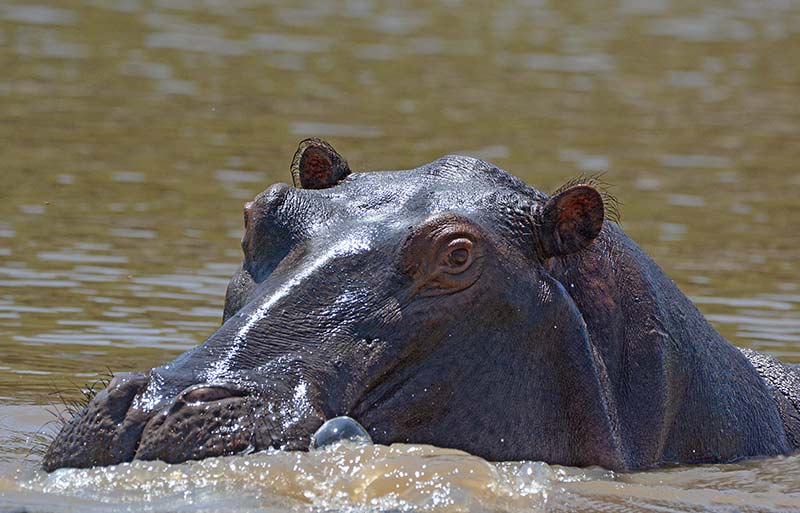
Hippo (Hippopotamus amphibius), Wami River, Saadani National Park
|
|
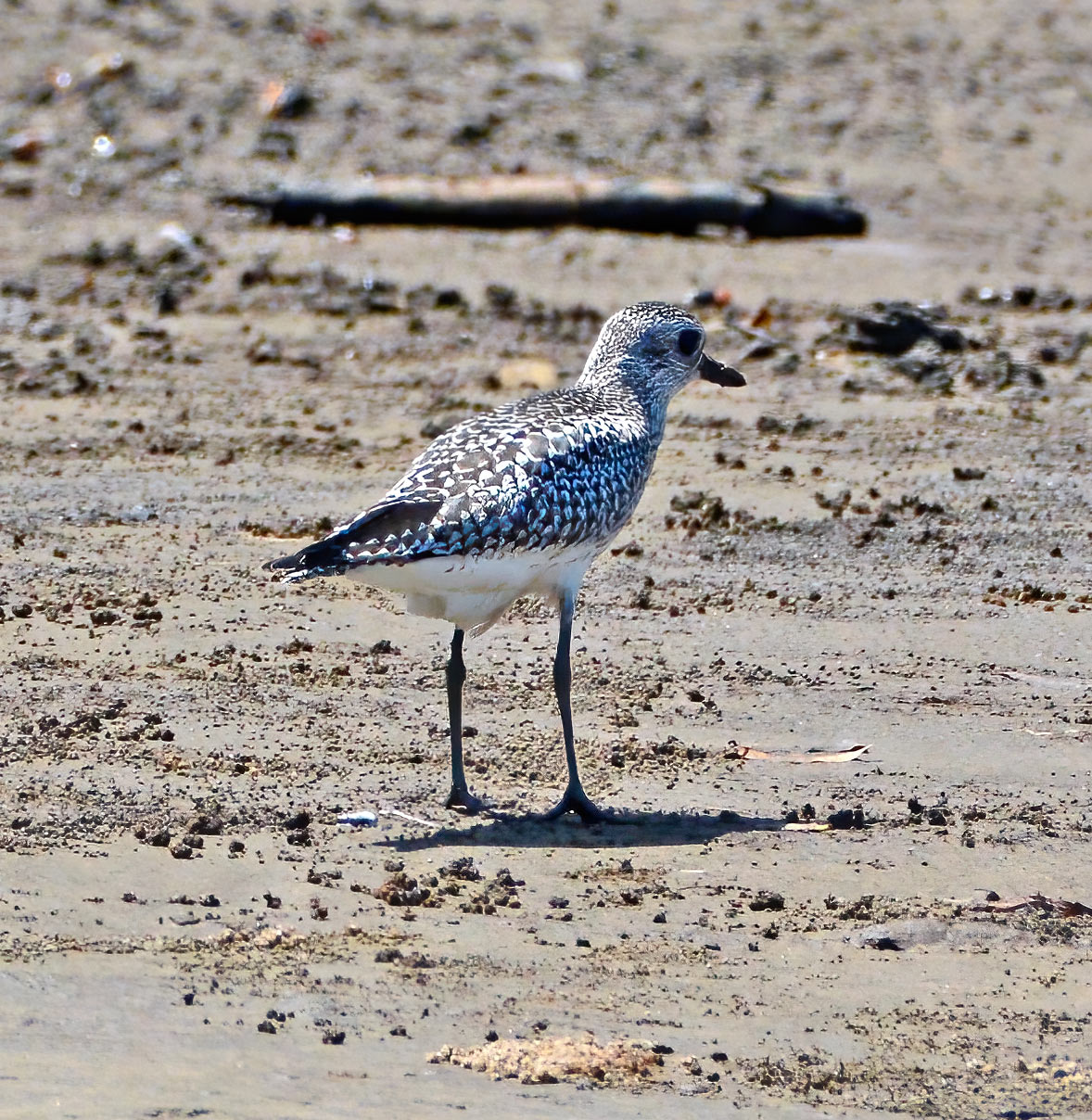
Black-bellied Plover - Tundralo (Pluvialis squatarola)
|
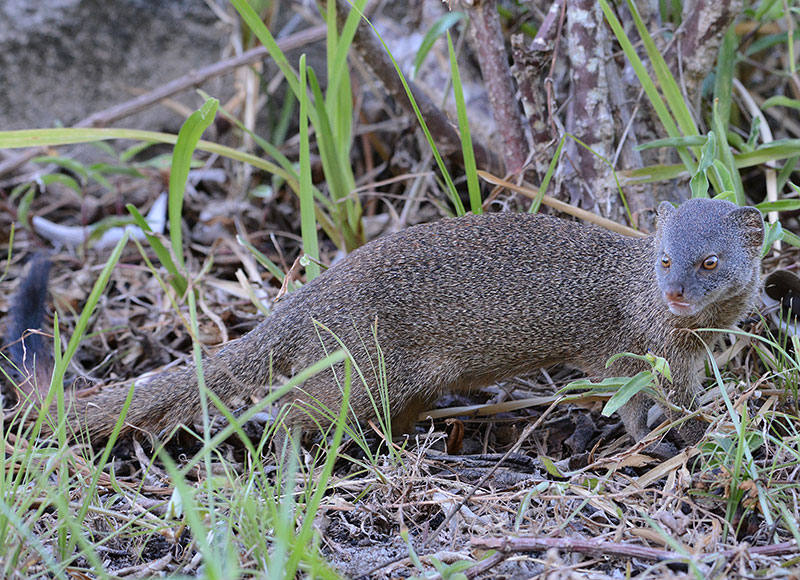
Slender Mongoose (Galerella sanguinea), Bomani Beach Bungalows
|
|
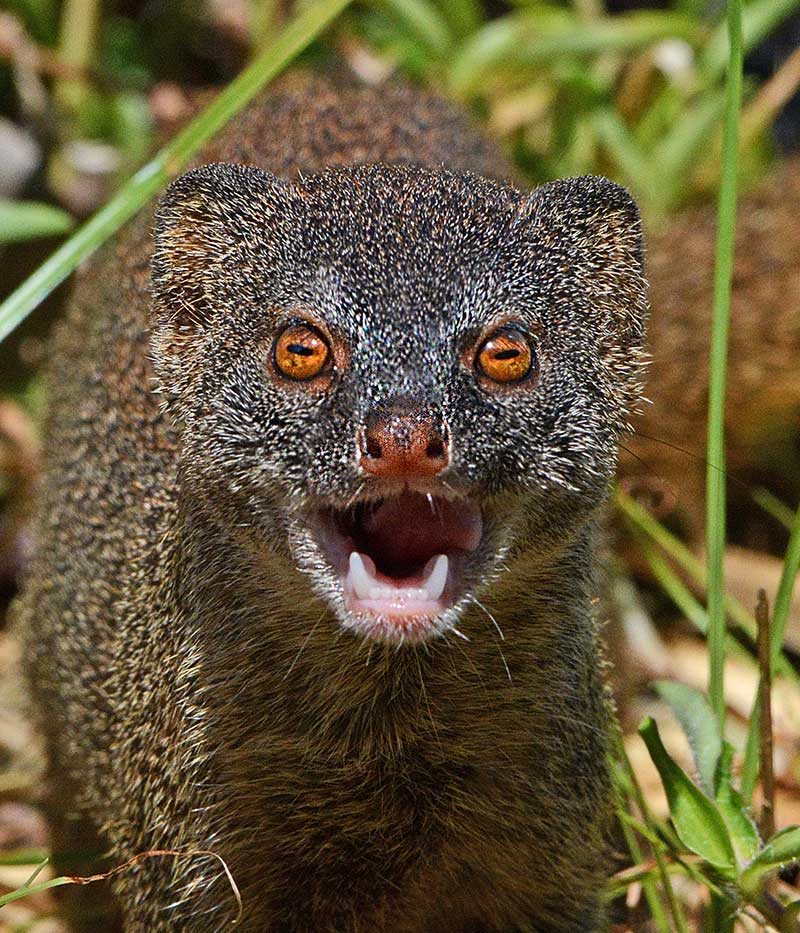
Slender Mongoose. Notice those strange horisontal slit pupils
|
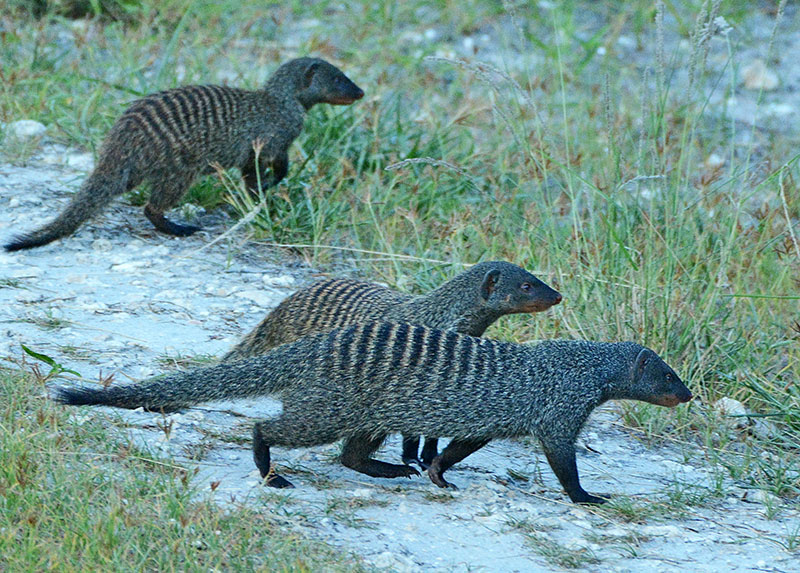
Banded Mongoose (Mungos mungo), Bomani Beach Bungalows |
|
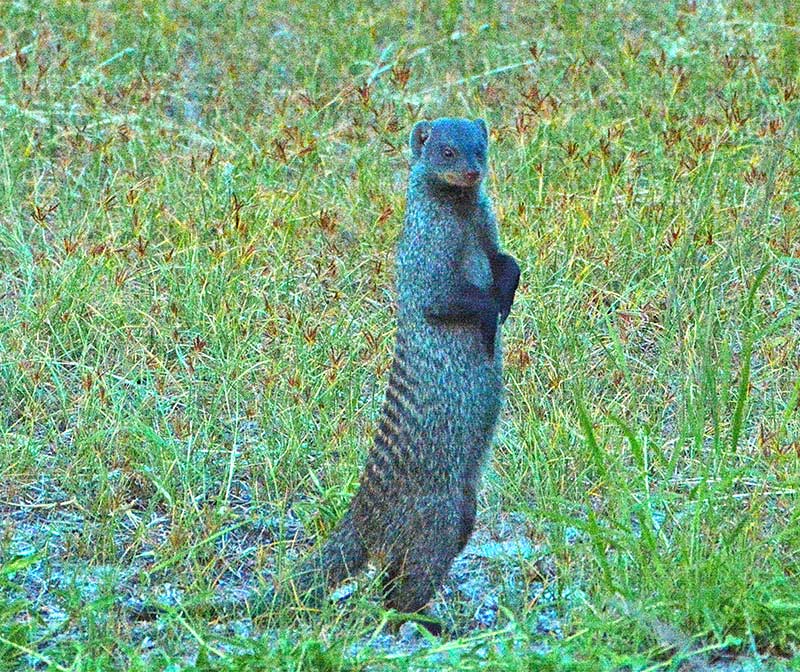
Banded Mongoose on alert |
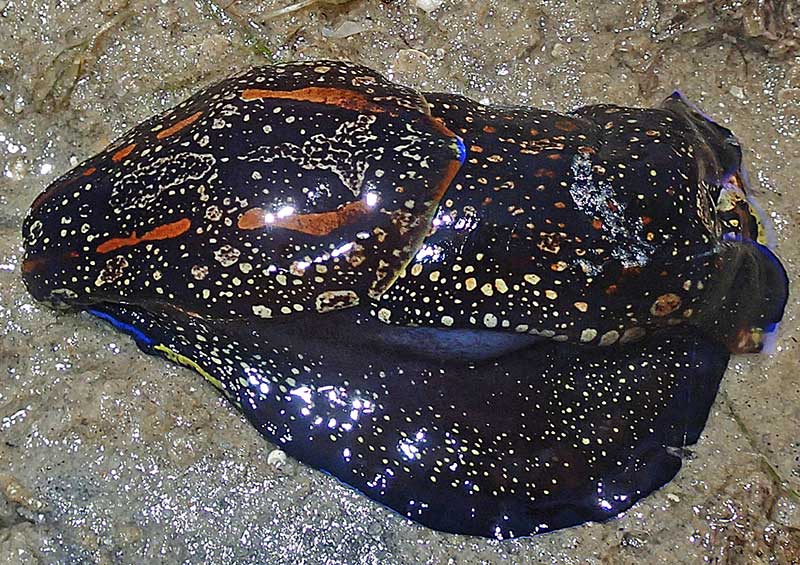
Stranded Blue-lined Philinopsis (Philinopsis speciosa), Bomani Beach Bungalows |
|
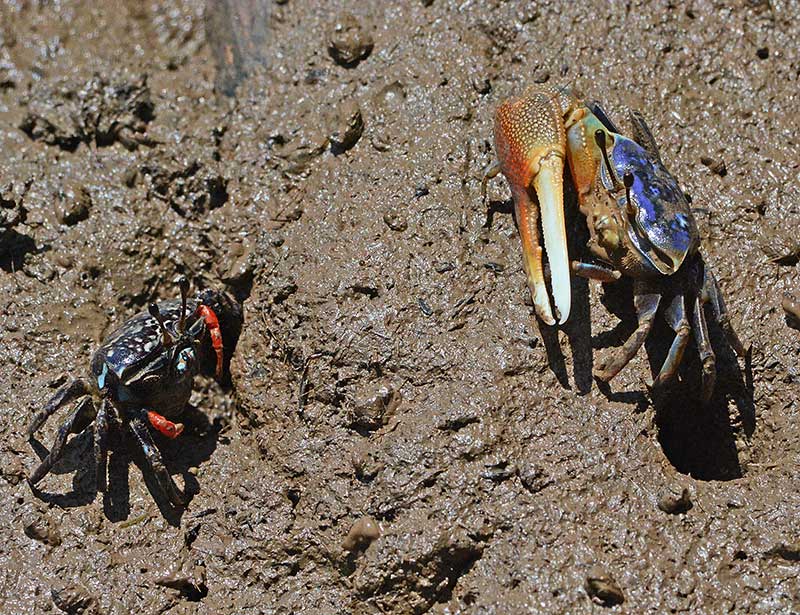
Mangrove Fiddler crab (Uca sp.), Saadani NP. Female left, only males have large claw. Six species of fiddler crabs occur in East Africa: Uca annulipes (=Uca occidentalis), Uca gaimardi, Uca inversa, Uca hesperiae, Uca urvillei and Uca tetragonon. Could be Uca tetragonon? Saadani National Park |
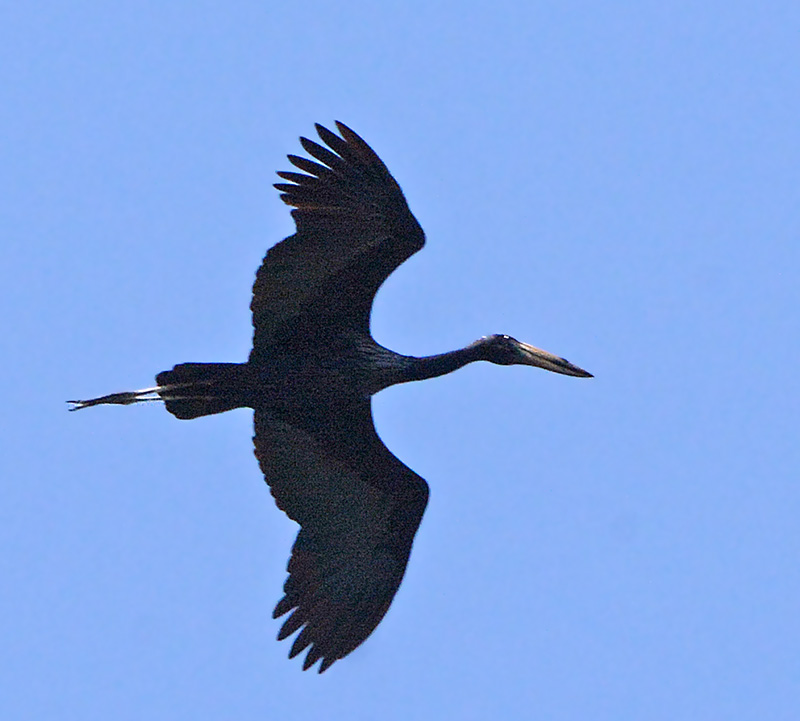
African Open-billed Stork (Anastomus lamelligerus), Bomani Beach Bungalows |
|
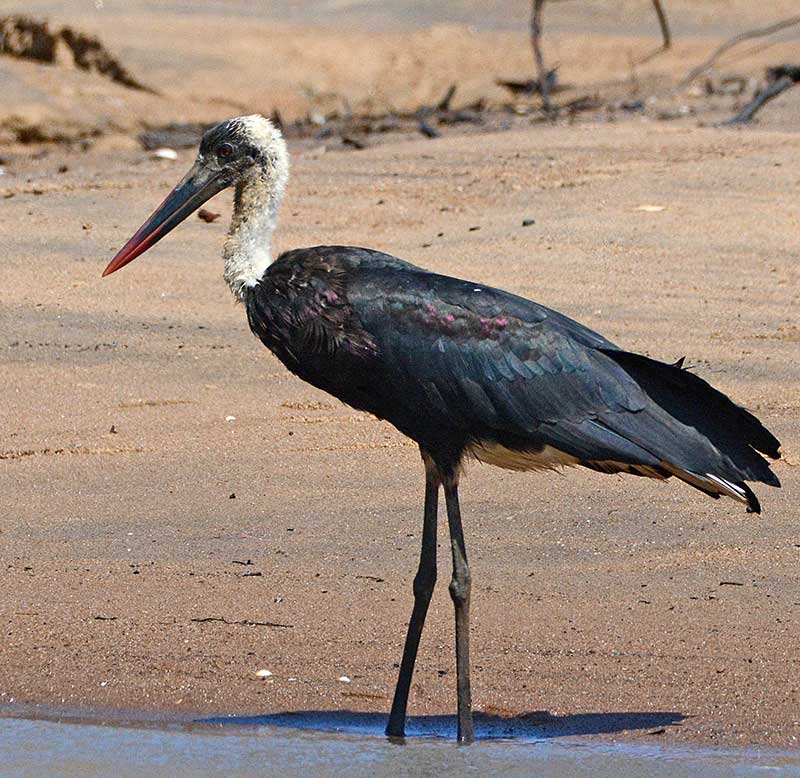
Woolly-necked Stork (Ciconia episcopus), Wami River, Saadani National Park |
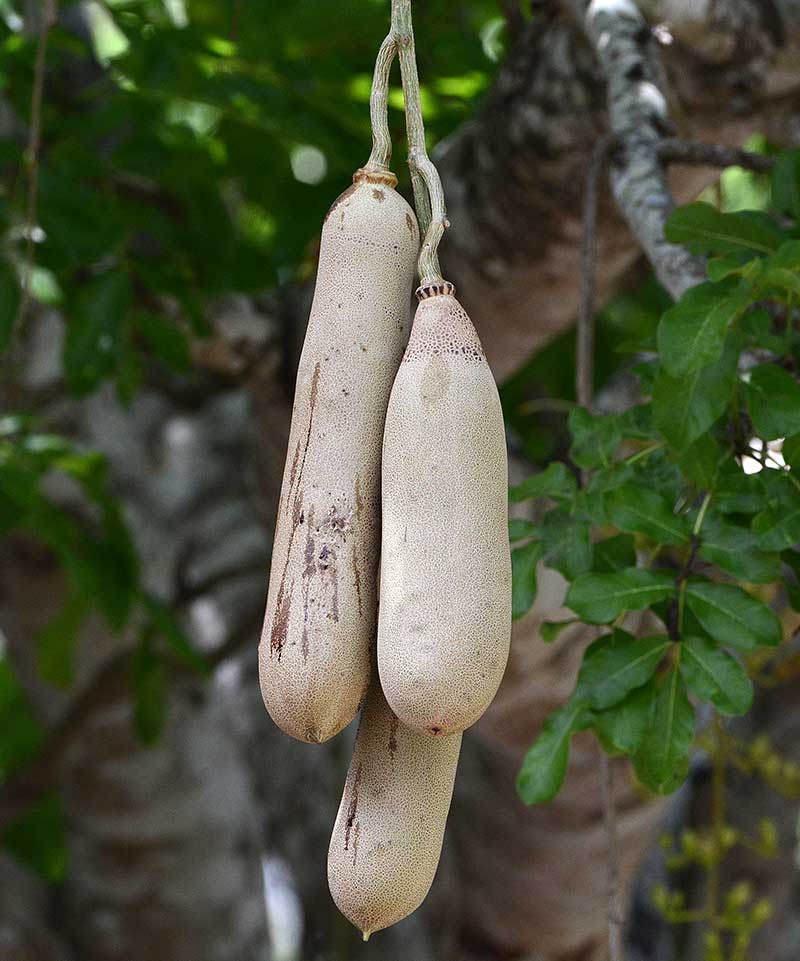
The Sausage Tree (Kigelia africana) fruit |
|
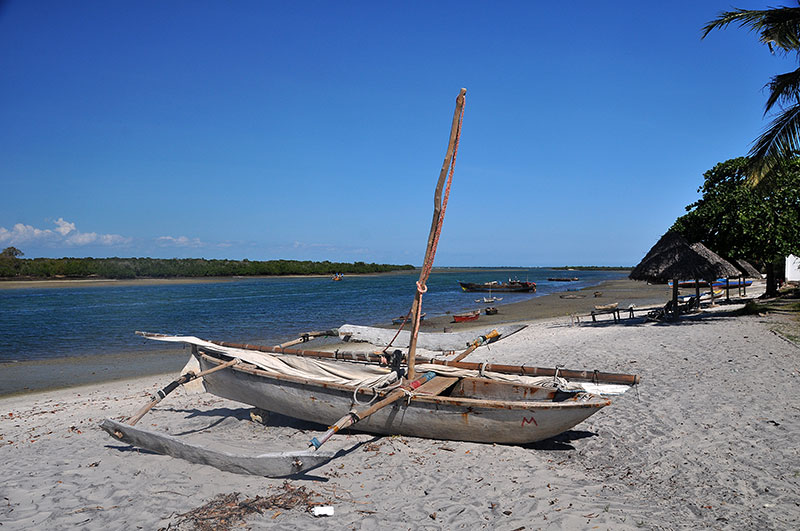
From the beach at Bomani Beach Bungalows |
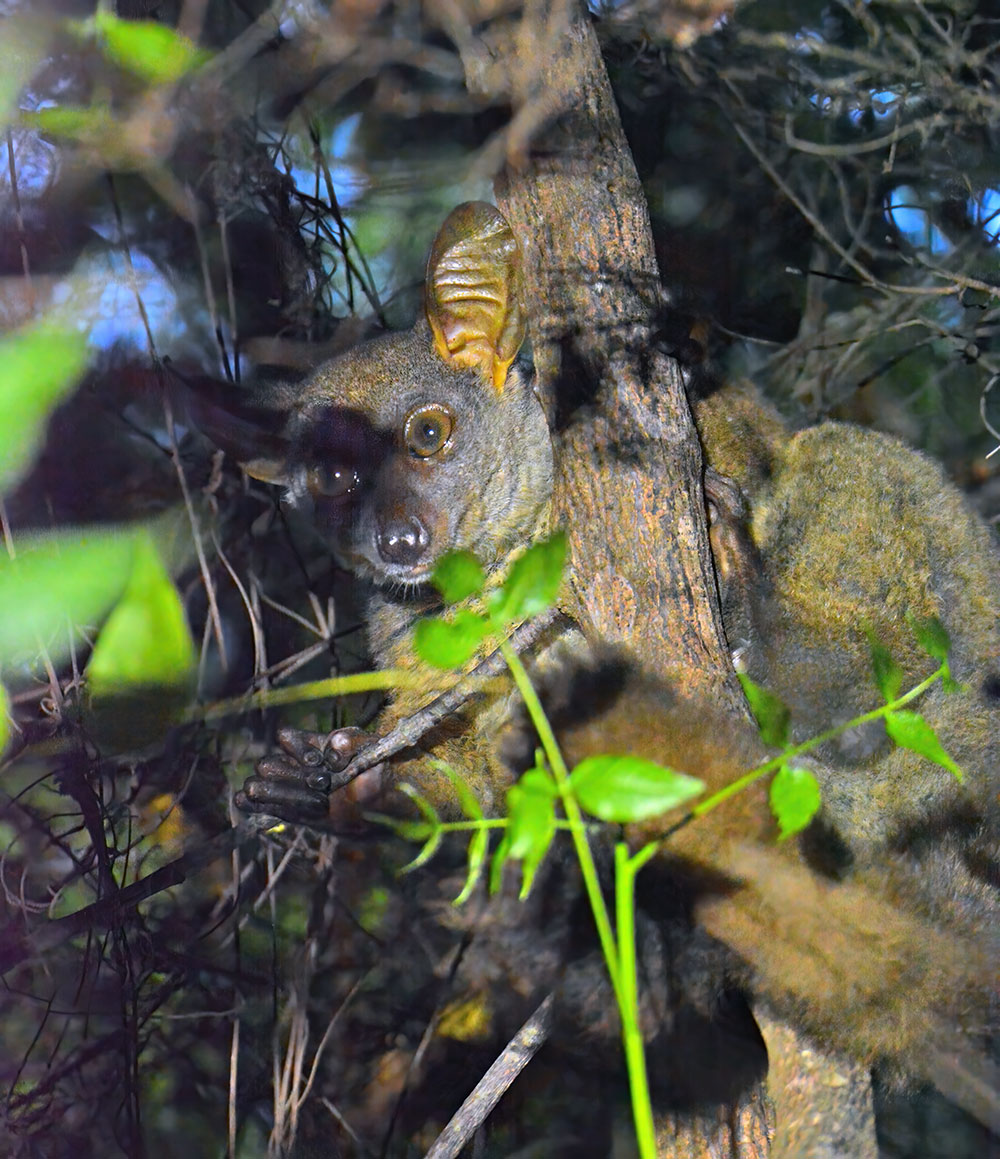
Northern Greater Galago (Otolemur garnettii ssp. panganiensis), the most common bushbaby in coastal Tanzania. Bomani Beach Bungalows |
|
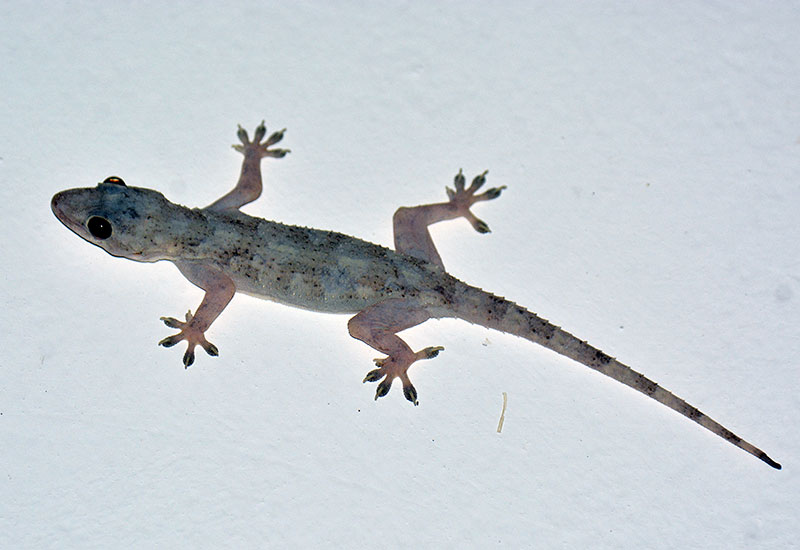
Tropical House Gecko (Hemidactylus mabouia), Bomani Beach Bungalows |
| |
|
|
| |
|
|
| |
|
|
| |
|
|
| |
|
|
| |
|
|